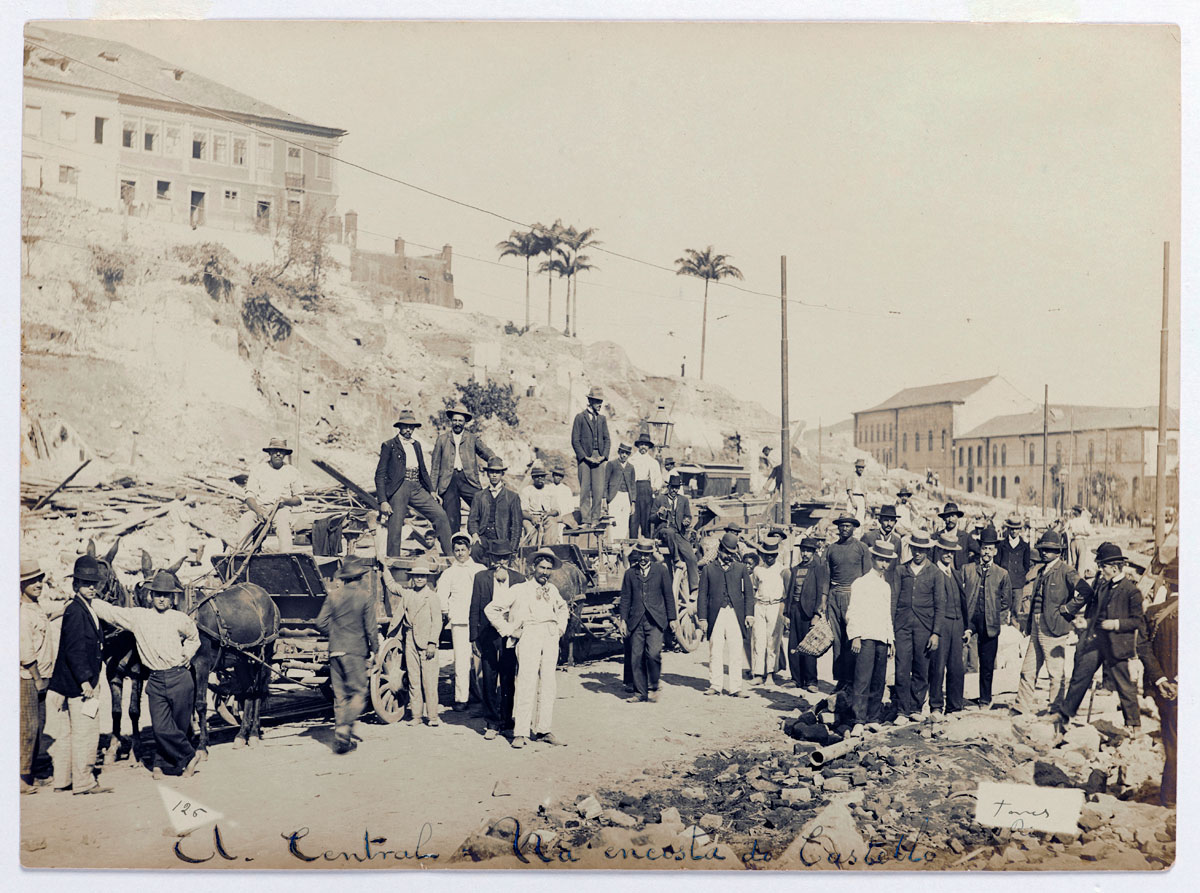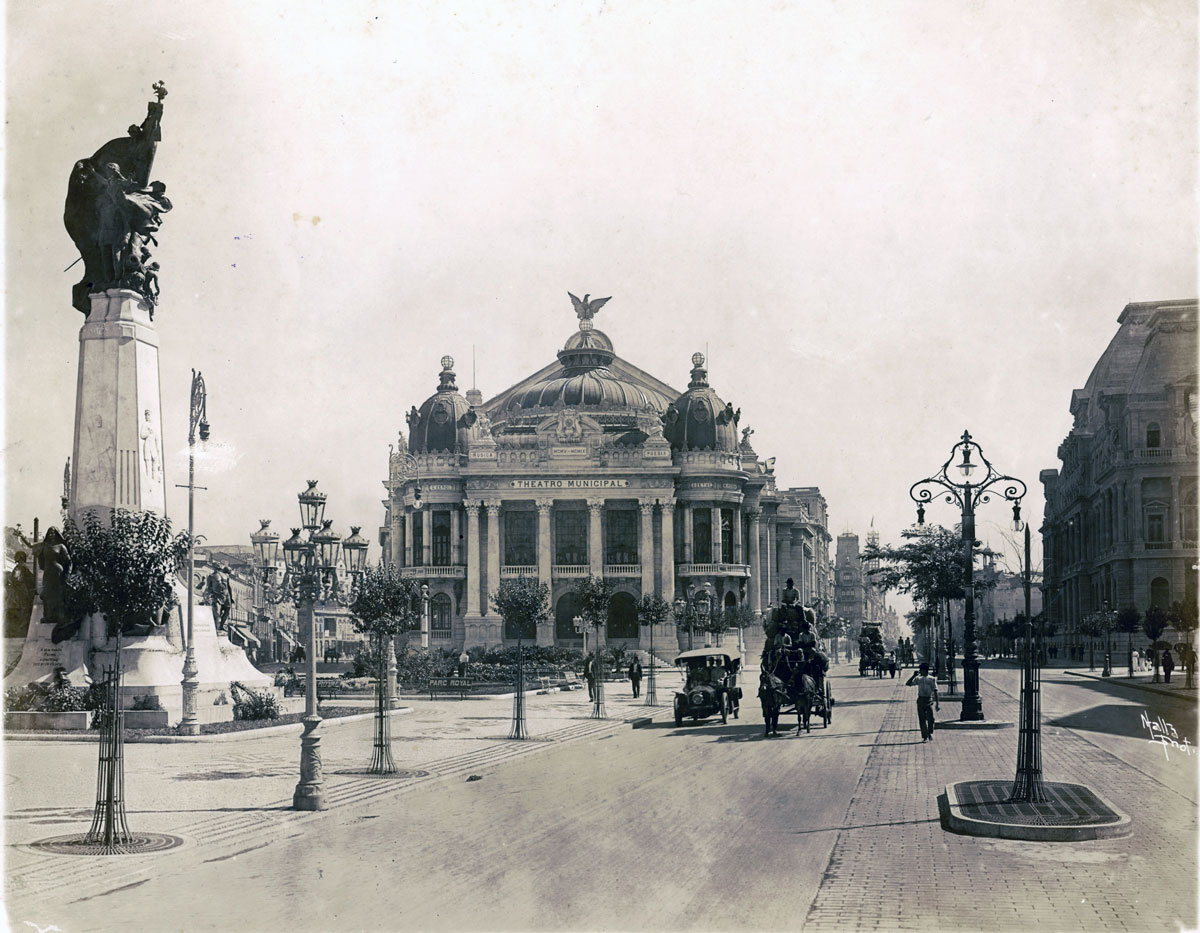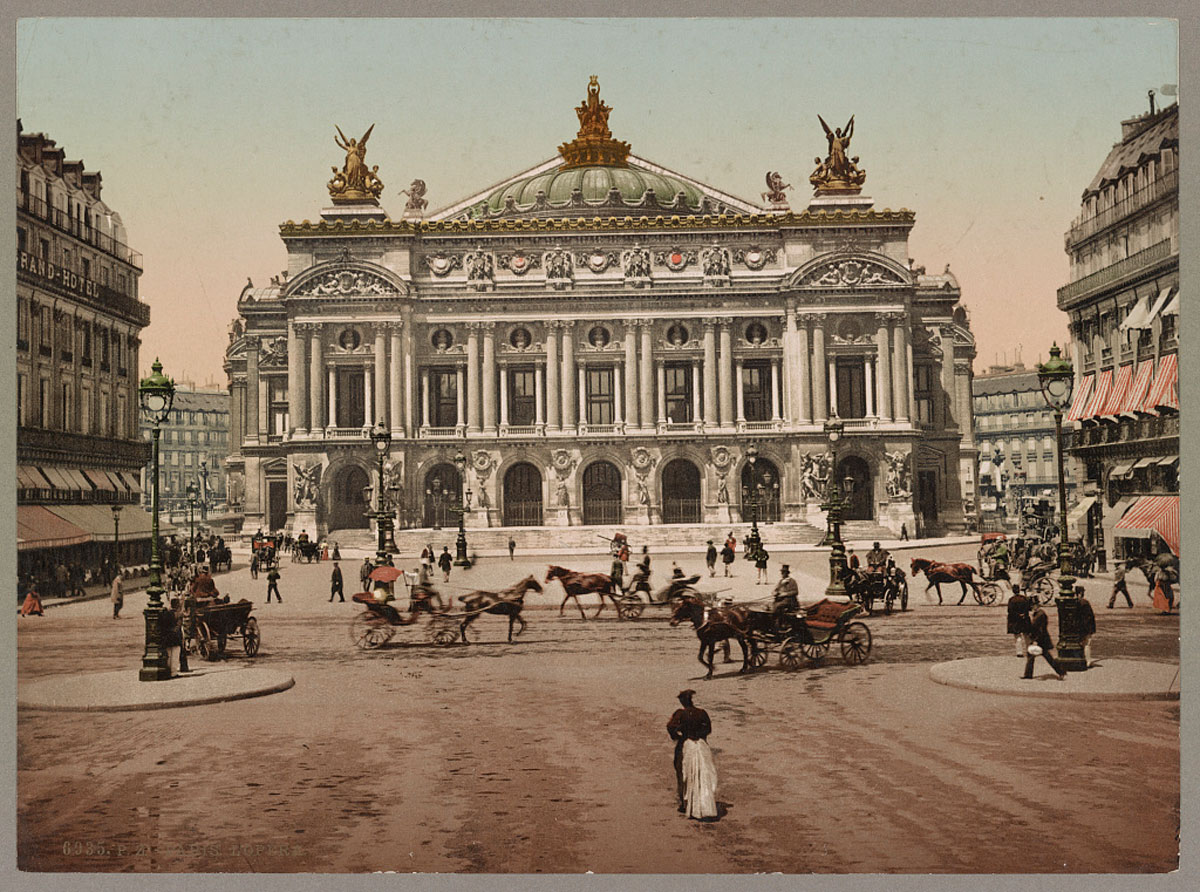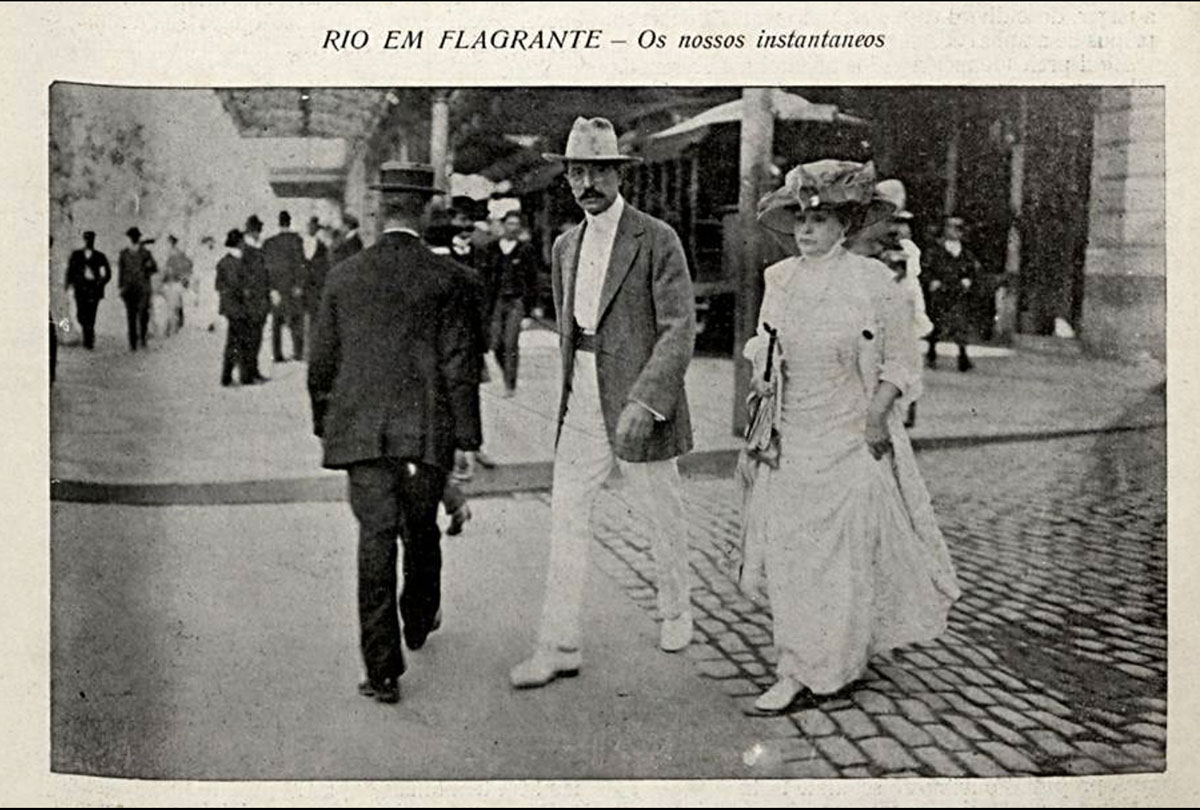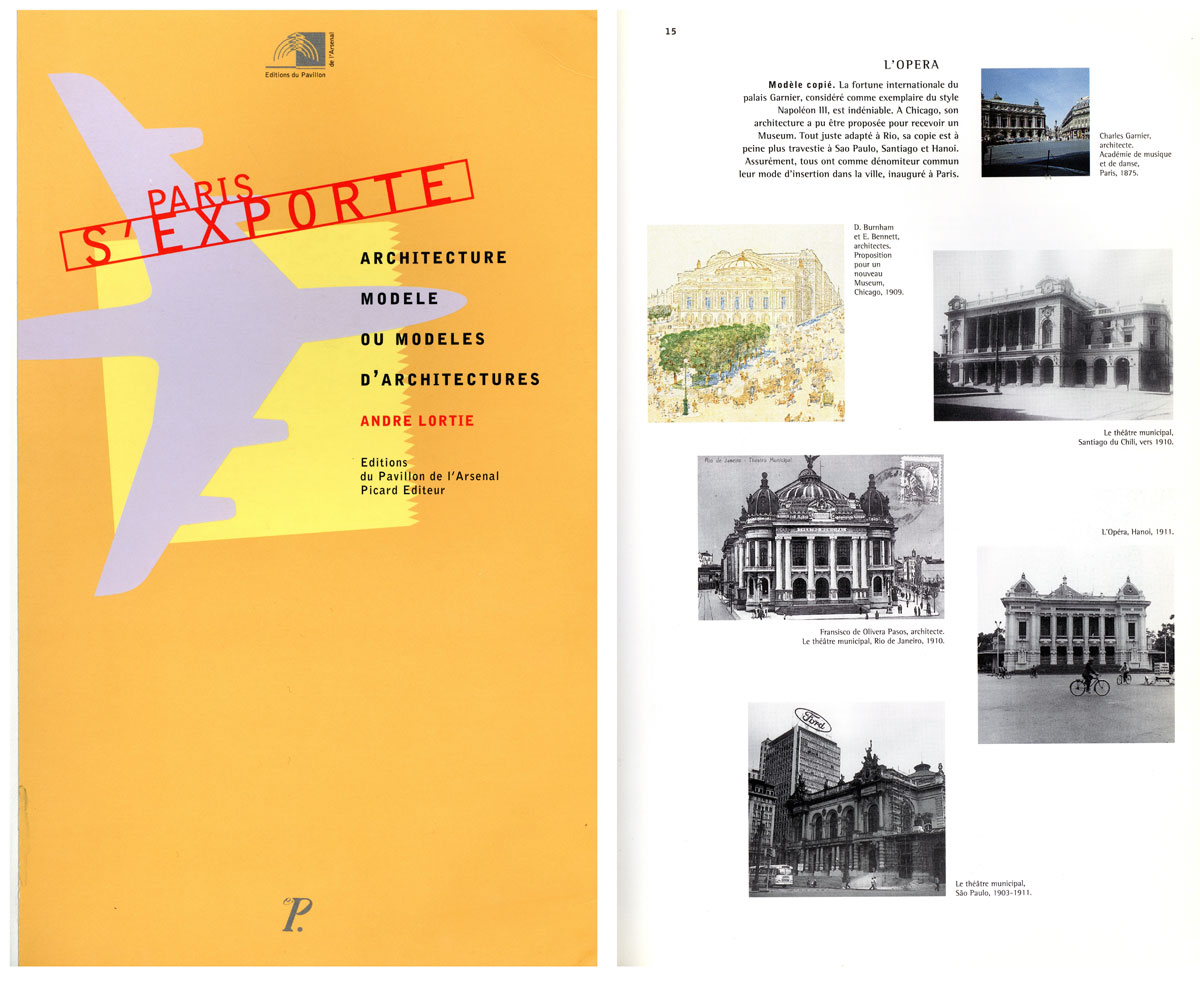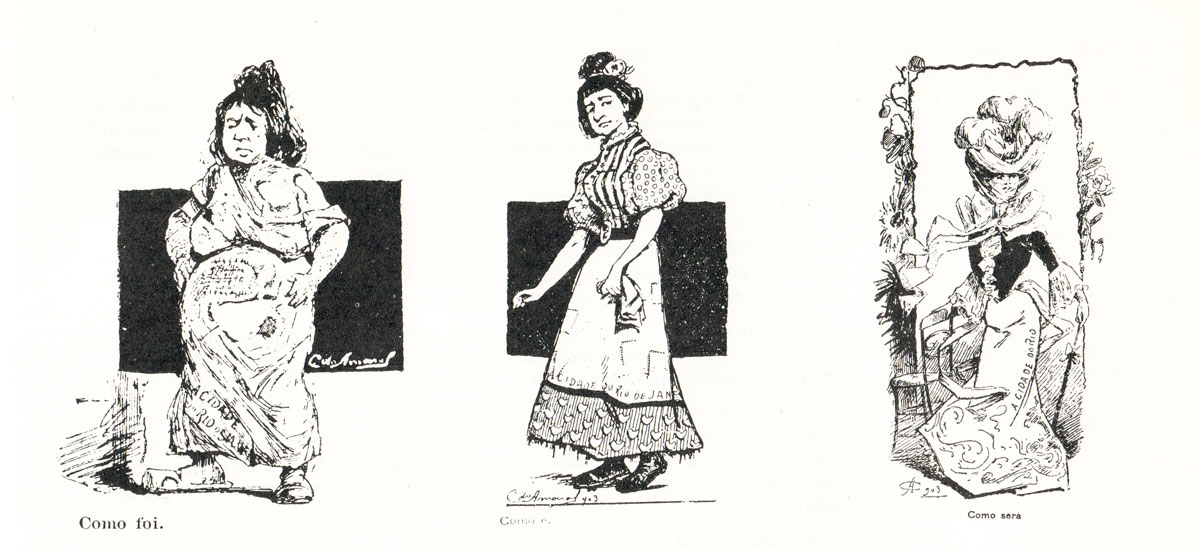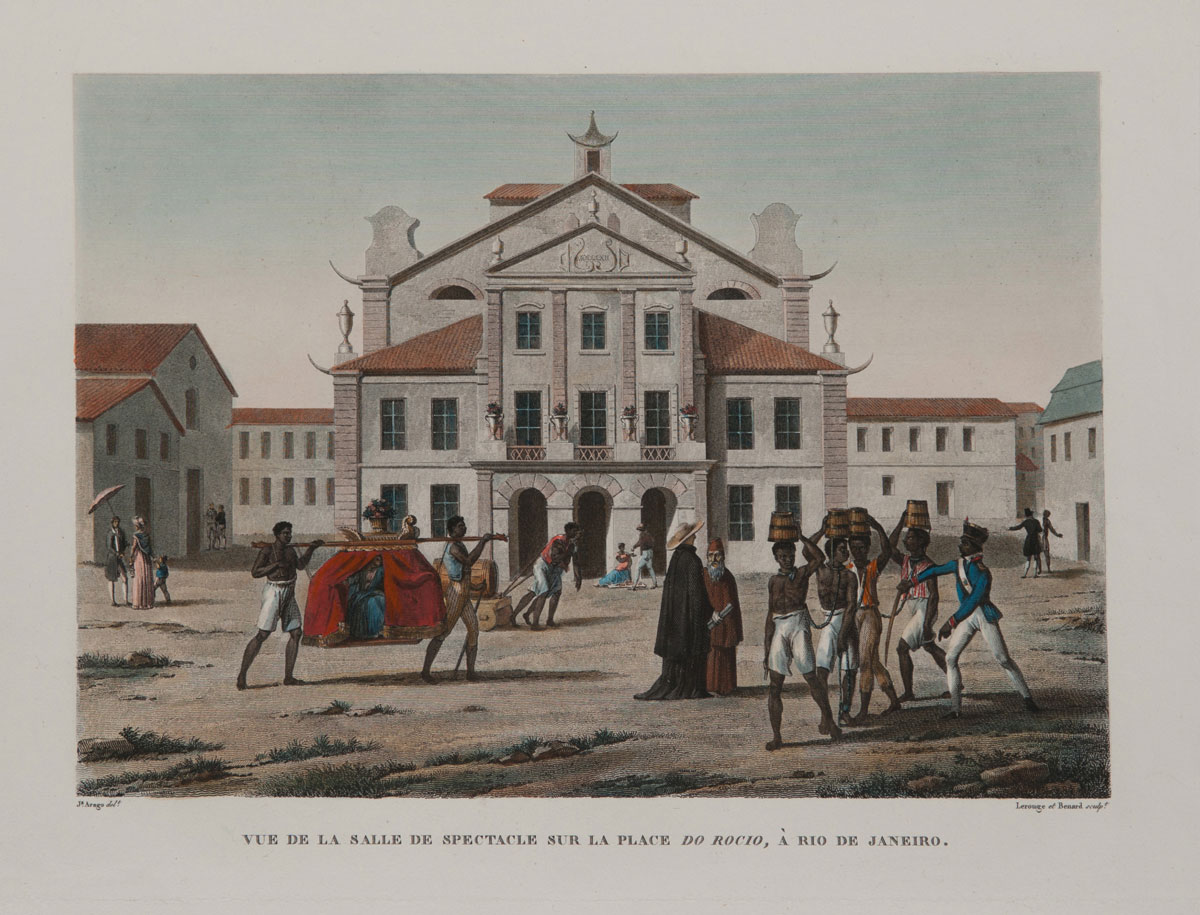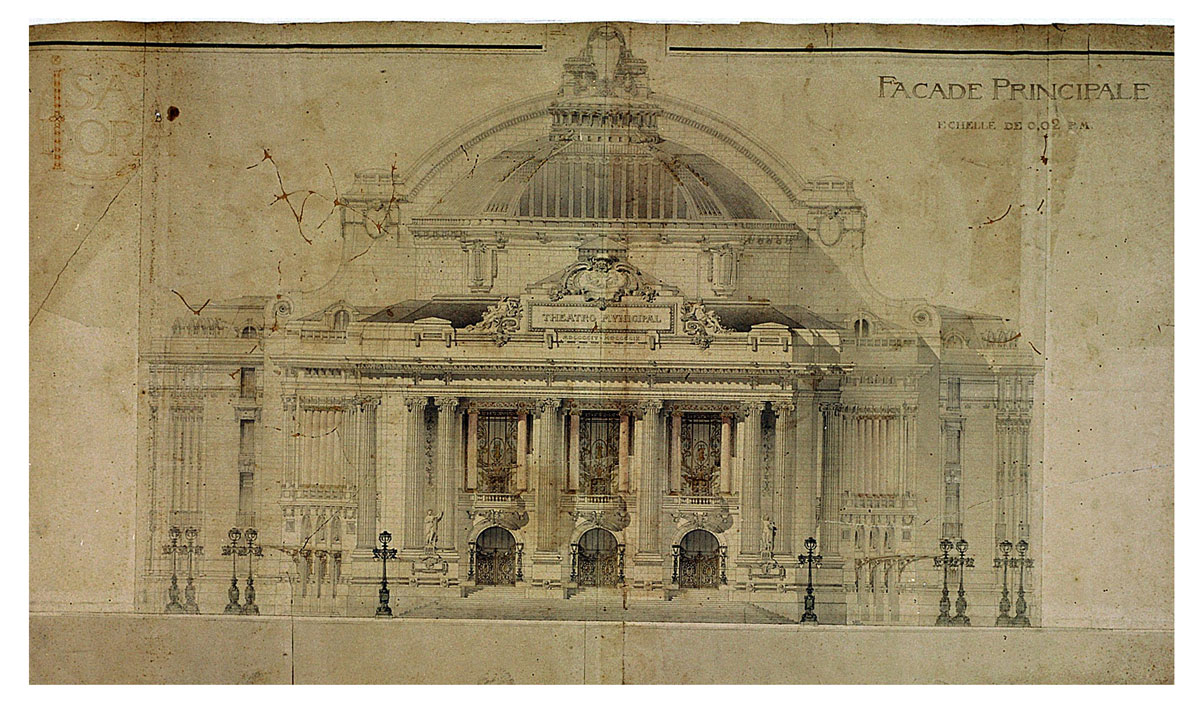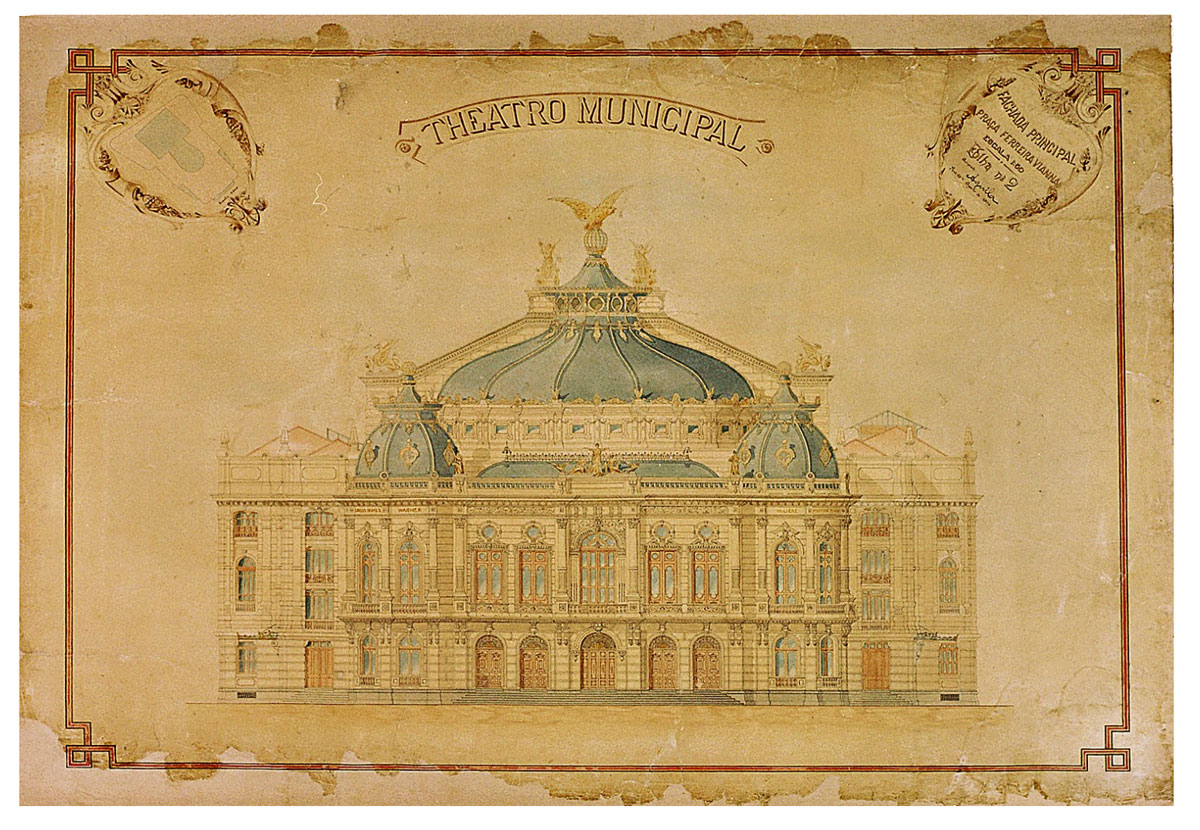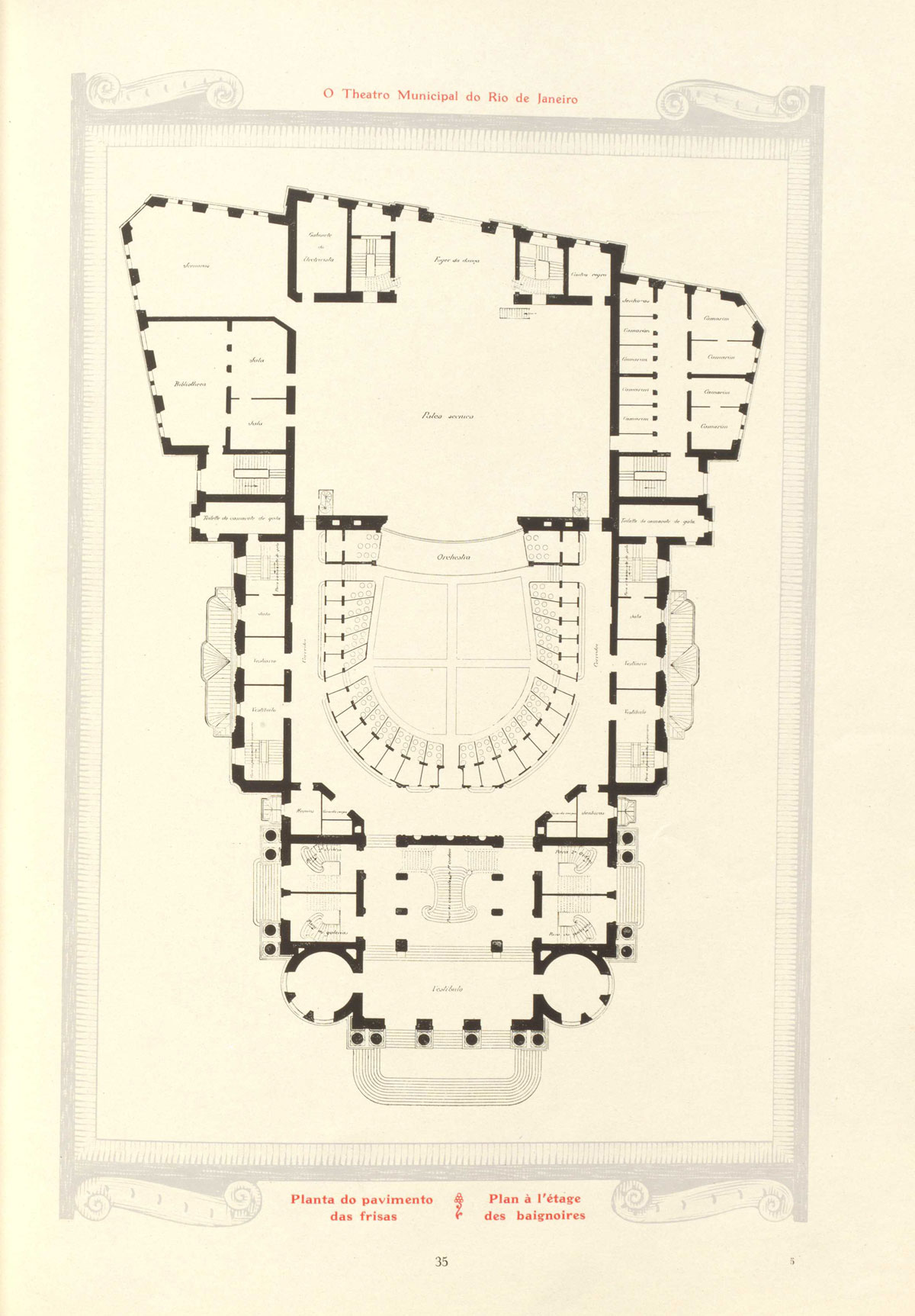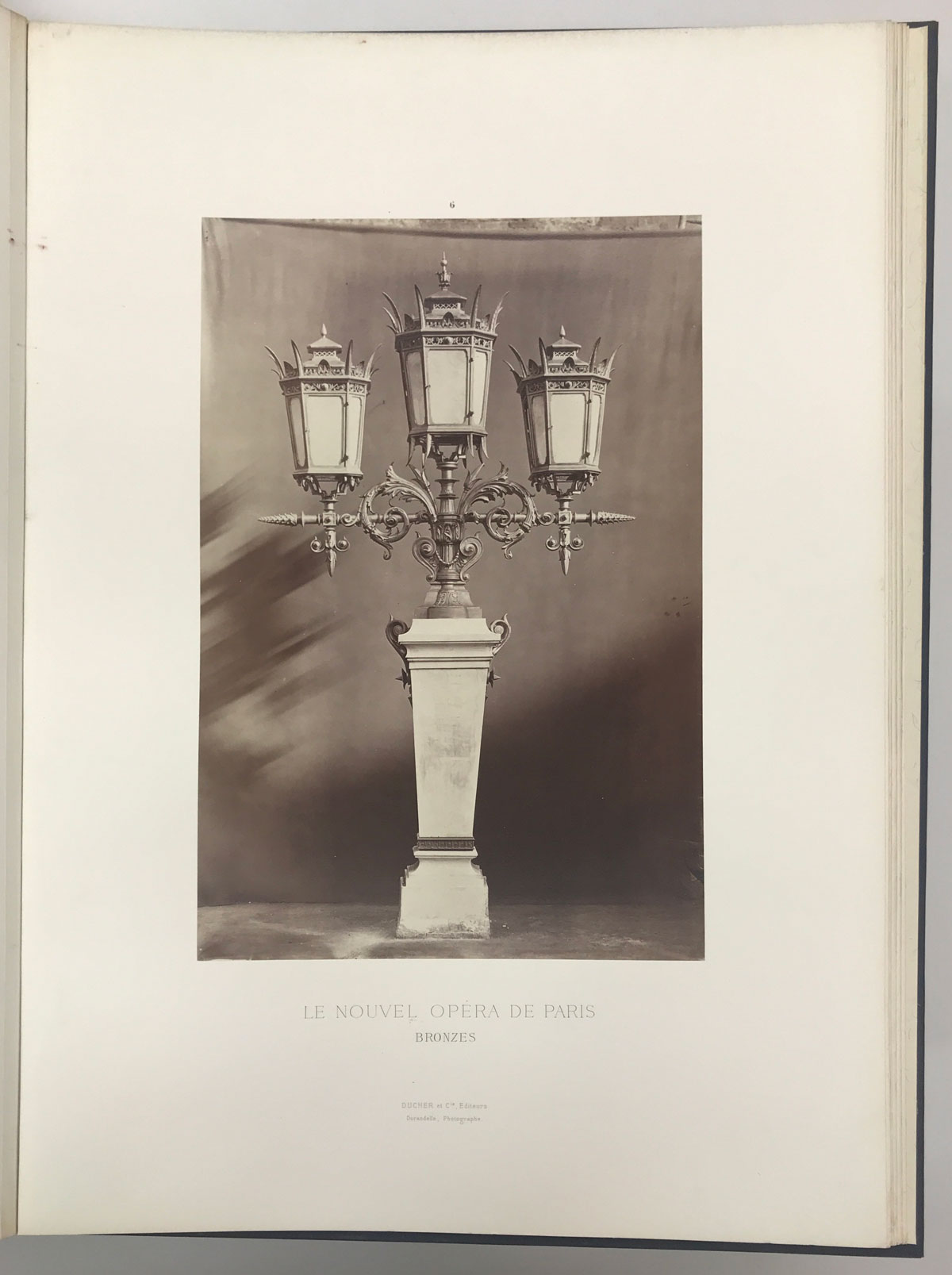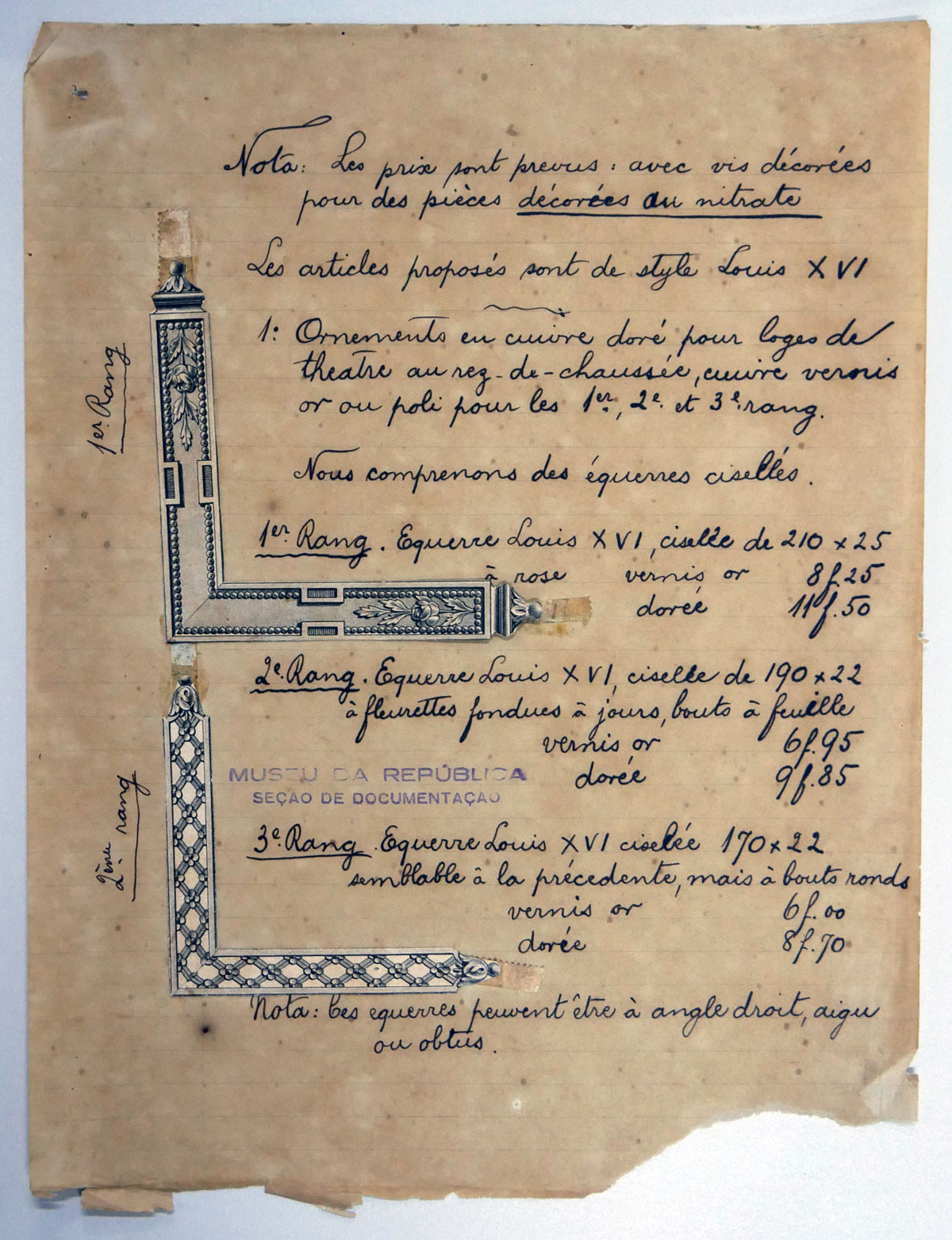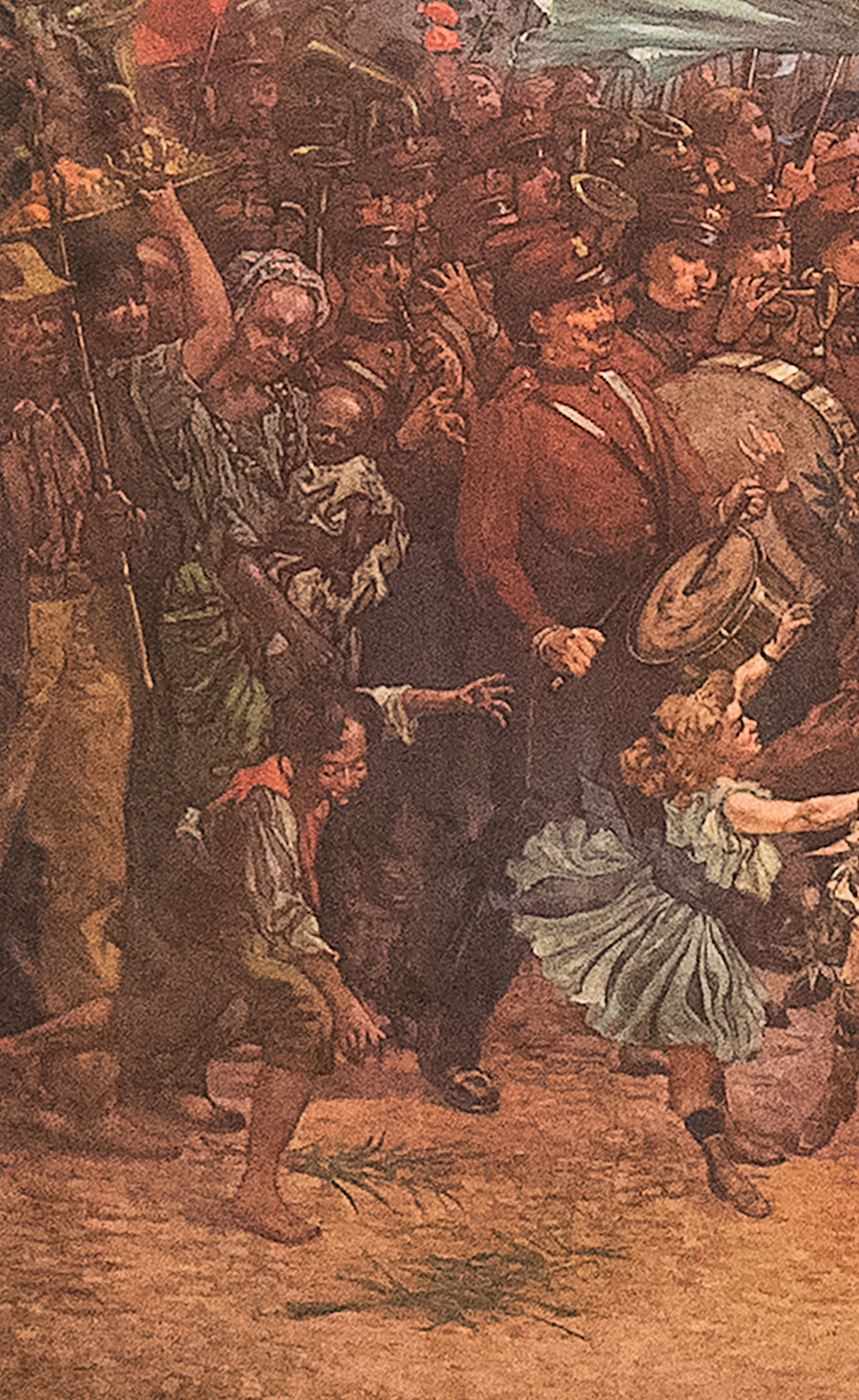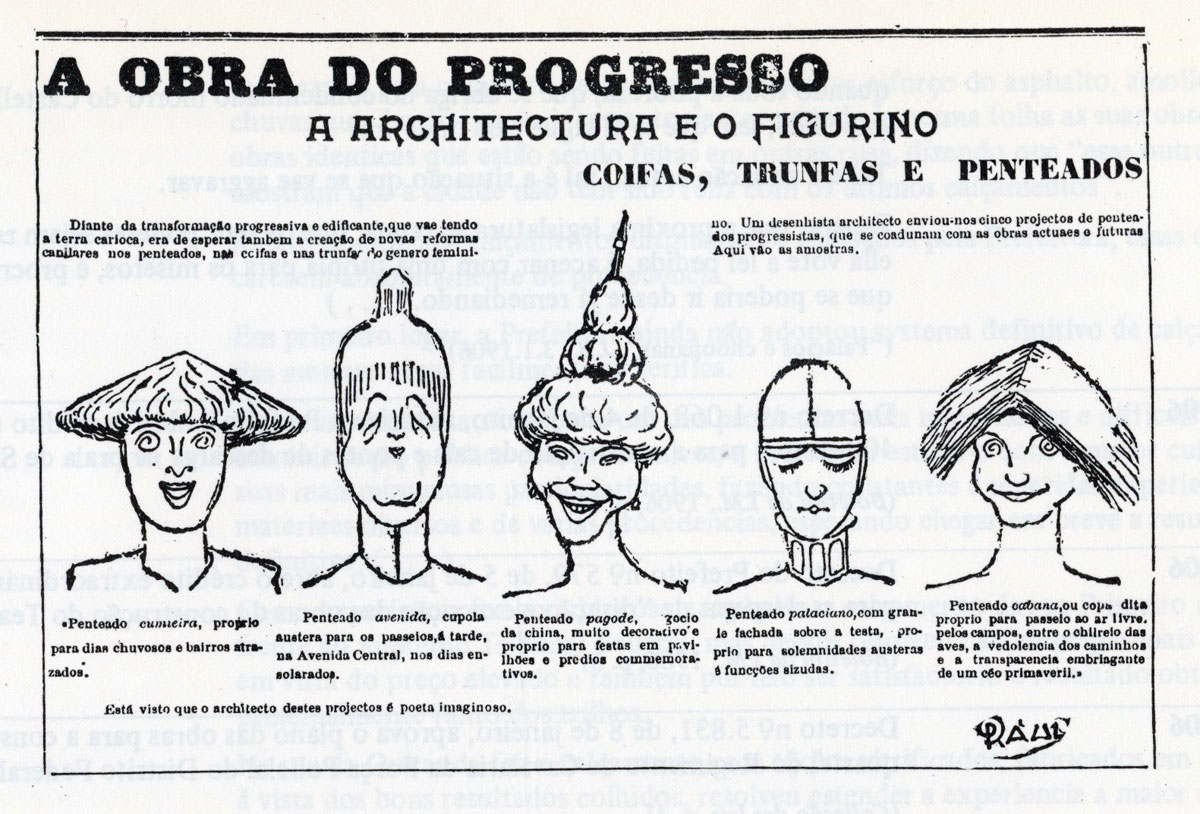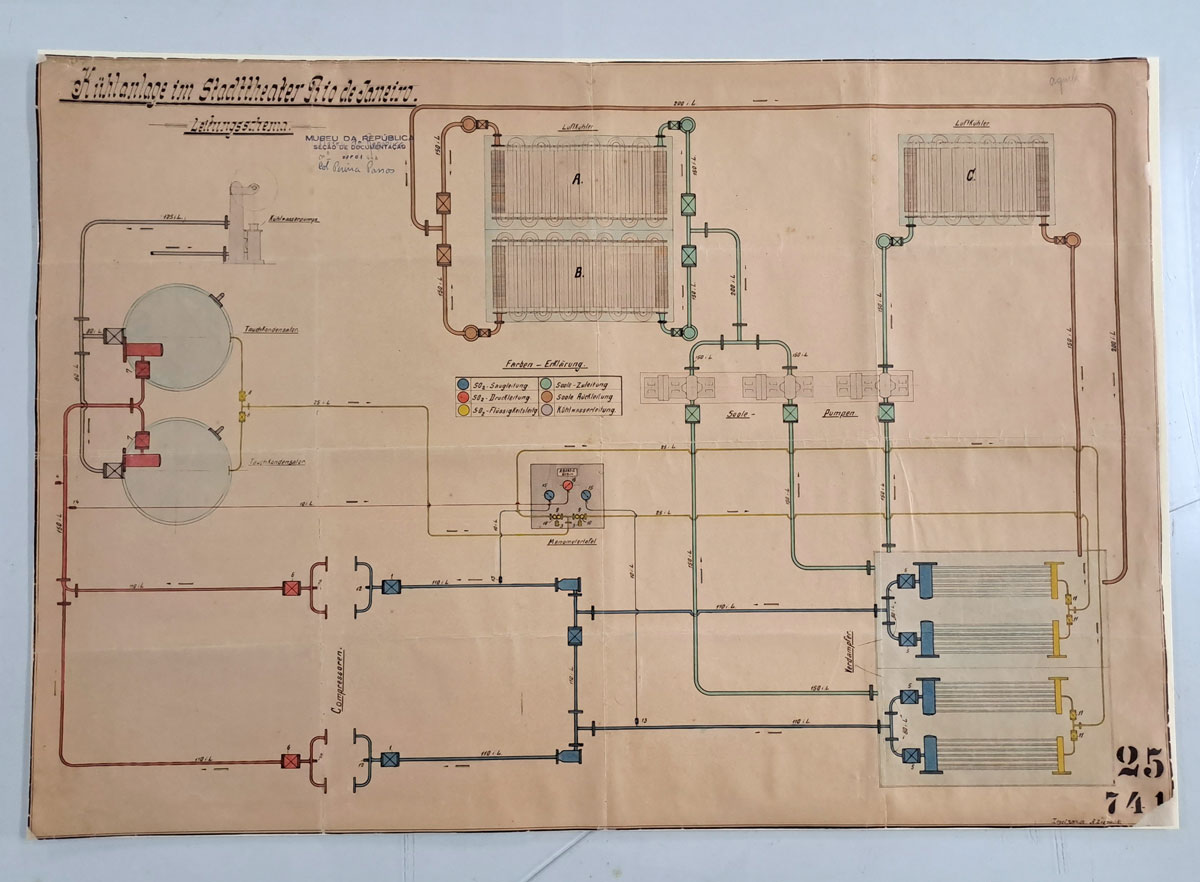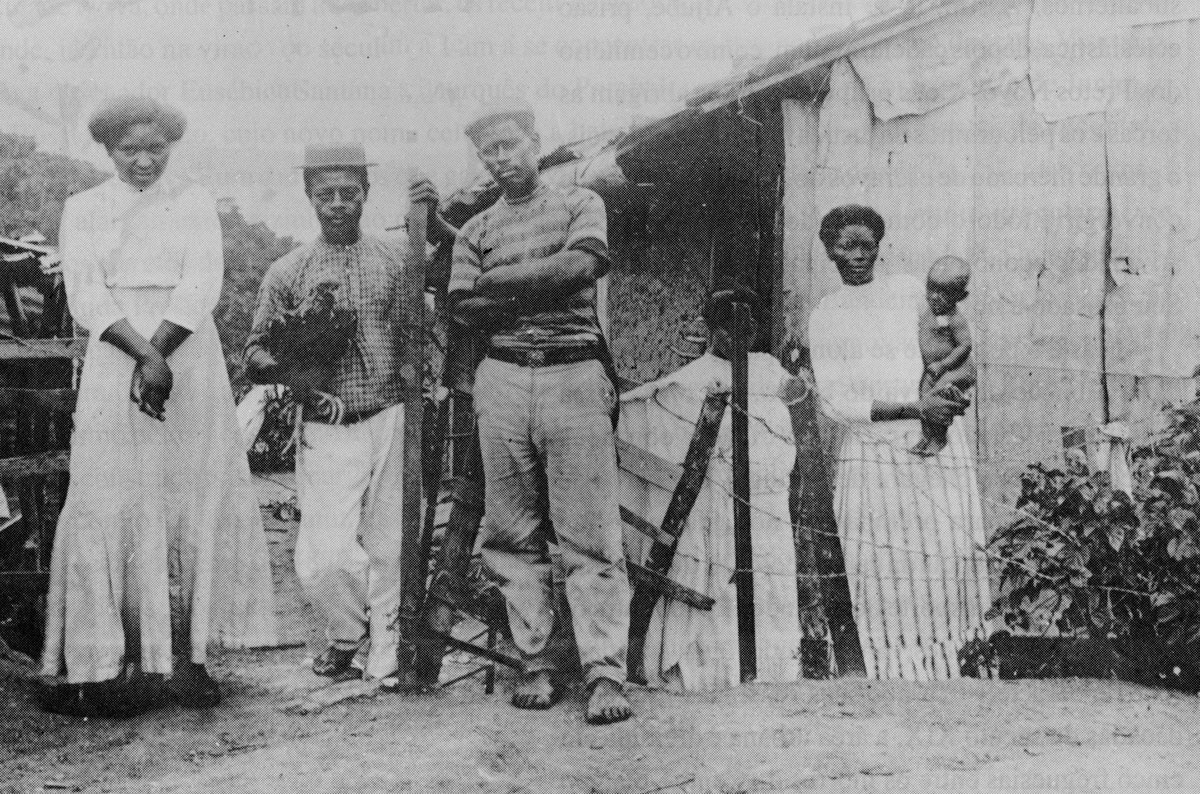Introduction
Over the course of the 20th century, development programs enlisted architects for the cause of modernization within and beyond the Global South. Emerging research examines this phenomenon across expanded, dynamic geographies, overcoming the limitations of ‘area studies’ shaped by Cold War agendas (Aggregate 2022). The familiar origin story, however, remains largely intact: that architecture’s developmentalist turn accompanied the rise of post-World War II international economic organizations, which initiated new patterns of technocratic knowledge transfer across ‘developing’ regions. Yet architecture’s relation to controlled national growth has a more complex history that goes back to well before the postwar era. Proposing a genealogy centered around Brazil, this article frames development’s genesis as an international architectural project within the long, global 19th century, when the staggered abolition of Atlantic-world slavery recast architecture’s role in the production of wealth.
Plans for economic growth occupied Brazil’s white ruling elite at the turn of the 20th century. President Francisco de Paula Rodrigues Alves outlined a vision of ‘national development’ (desenvolvimento nacional) to the National Congress on 3 May 1903, aiming to deliver the young Republic (1889–1930) from the shackles of its colonial and imperial past toward a prosperous future. He promised Brazil no less than a ‘new life, inciting work in a country that has lands for all cultures, climates for all peoples and profitable rewards for all capital’ (Alves 1903: 10). The peoples in question were a particular ilk: European immigrants — Italians, Portuguese, Spaniards, Poles, and Germans, mainly — lured to Brazil’s labor force to effect population ‘whitening’ (branqueamento) after the suppression of the Atlantic slave trade (1850s) and the abolition of slavery (in 1888, the last Western nation to do so). For Alves, development could only be achieved by eliminating the diseases and ‘defects’ that awaited white immigrants in Brazil’s capital city, Rio de Janeiro.1 His administration thus embarked on a program of urban improvements in collaboration with Rio’s newly elected mayor, Francisco Pereira Passos, an engineer from a wealthy plantation-owning family. Passos’s plans for Rio drew from his extensive study and travel in Europe. Trained at the French École des Ponts et Chaussées at the height of prefect Baron Haussmann’s urban reforms, Passos also embarked on a quasi-Grand Tour of modern infrastructural projects that included the port works of Marseilles and the Rigi mountain railways of Switzerland (Benchimol 1990: 192–195). His firsthand observations shaped the contours of Passos’s imagination, yielding plans for Brazil’s development from its rural hinterlands to its capital city.
Rio’s modernization campaign from 1903 to 1906 is the subject of a vast literature (Del Brenna 1985; Abreu 1987; Benchimol 1990; Carranza and Lara 2014; Azevedo 2016). Scholars have demonstrated how Pereira Passos and his international consortium of experts and British financiers worked in tandem to translate Haussmann’s tabula rasa planning toward distinctly local development goals: obtaining foreign investments, optimizing the circulation of agricultural exports, and halting the scourge of Yellow Fever through forced vaccination. Design served these ambitions through demolition and construction alike. Cadres of engineers, construction companies, and workers flattened hills (Figure 1), razed tenements, and filled in marshlands to control mosquito populations and build new sanitation and transportation networks. Principal among the latter was the city’s new urban centerpiece, the Avenida Central: a 30-meter-wide boulevard that sliced through the city’s dense colonial-era fabric and evicted thousands of multiracial tenants, without compensation, in exchange for a row of elite cultural institutions and improved access to a rebuilt port for international trade.
João Martins Torres, Demolition of the Morro do Castelo (Castle Hill) to construct the Avenida Central, 1904. Photograph, Acervo Instituto Moreira Salles, Inventory # 002008OBAC008, Public Domain. https://acervos.ims.com.br/portals/#/detailpage/88656.
These institutions play a subsidiary role in narratives of the Passos-era urban reforms, yet it was within their walls that imaginaries of development took root during Brazil’s First Republic. Look no further than the city’s new opera house, Theatro Municipal (1904–1909) (Figure 2). Sited along the erstwhile Avenida Central (now Avenida Rio Branco), where it faces a public square ringed by monumental classical architecture, the building bears an unmistakable resemblance to the Paris Opéra (1861–1875) by the French architect Charles Garnier (Figure 3). And indeed, in the eyes of Brazil’s republican bourgeoisie, the theater’s completion marked Rio’s debut on the world stage of civilized society. Plans were made to christen the stage on 14 July 1909, Bastille Day, with a performance by Gabrielle Réjane, a French actress and international celebrity (‘A Temporada Theatral’ 1909). Her arrival in Rio caused nothing short of a sensation among the Carioca elite.2 Local newspapers ran paparazzi photos of the French star strolling along the city’s new boulevard, as though the Avenida Central were continuous with Haussmann’s Paris (‘Rio em Flagrante’ 1909) (Figure 4). Journalists even asked Réjane for her impression of the Theatro Municipal, whose design bore no direct relation to the atelier of École des Beaux-Arts patron Garnier. Réjane flattered her Carioca audience by describing the theater as more elegant than Garnier’s — a response that inspired a sense of victory among the city’s elite (Edmundo 1950: 165). In the words of one journalist, the Theatro Municipal would ‘silence the old complaints that Rio de Janeiro didn’t have a theater worthy of its development’ (A Tribuna 1909).
Photograph of Réjane on the Avenida Central, published in Fon-Fon 3(30) (24 July 1909): 4. Hemeroteca Digital, Fundação Biblioteca Nacional do Brasil, Public Domain.
Rio’s uncanny Beaux-Arts theater raises the question of architecture’s role in national development amid unprecedented transnational exchange. Scholars of Brazilian modernity have approached the subject of design at the nexus of urbanization, public health, and race science (Needell 1984; Chalhoub 1993; Meade 1997; López-Duran 2018). These studies, however, rarely consider design at the scale of architecture, let alone at the hands of the architect — a professional identity that, too, was under development at the turn of the 20th century.3 Yet again the Theatro Municipal offers a case in point. The project’s principal designer was none other than the mayor’s own son, Francisco de Oliveira Passos. Like his father, Oliveira Passos trained as an engineer, but in Germany rather than in France. The Theatro Municipal was the only permanent building Oliveira Passos designed over the course of a career that focused on economic development through railway infrastructure.4 While working on the theater, Oliveira Passos was also an engineer in Brazil’s Central Railway corporation, where he planned new lines to circulate inland coffee to coastal ports. Oliveira Passos oversaw the expansion of the national sawmill industry during the 1920s, and he later directed the Brazilian Center of Industry, where he lobbied for protectionist regulations to support national industry (according to his biography in Dias n.d.). It could thus be said that Oliveira Passos was an entrepreneur in architect’s clothing. Such a concept is perhaps all too familiar in today’s neoliberal era of capital-fueled urban spectacle, from Manhattan’s Hudson Yards to Abu Dhabi (Spencer 2016). Our contemporary vantage point allows us to look anew at architecture’s overlooked agency during the first modern wave of historical globalization (Bayly 2004; Rosenberg 2012; Osterhammel 2014).
To pursue this inquiry, new approaches are needed to move beyond the theater’s limited historiography. Monographs on the building celebrate its status as an object of national patrimony (Rio 1913; Lopes 1999; Ermakoff 2010; Santos 2011; Ferrão and Rodrigues 2012). Yet architectural historians view the Theatro Municipal with a mixture of curiosity and contempt that echoes the larger denigration of Beaux-Arts design in histories of Latin American architecture (Shmidt 2022). When it appears in scholarly literature, the theater is described as a mere copy of Garnier’s Opéra, evoking postcolonial theories of failed mimicry at the margins, or what art historian Partha Mitter has called the ‘Picasso manqué syndrome’ (2008). Take, for example, the catalog for the 1995 exhibition Paris, s’exporte (Figure 5). The exhibition catalog situates the Rio theater among a smattering of other examples of Garnier’s ‘copied model’ (modèle copié), as the curators describe it: from Daniel Burnham’s unrealized design for a museum in his Chicago master plan to a French colonial theater in Hanoi (Lortie 1995: 15). The catalog’s allusion to Empire dovetails with the perspective of the Dependency School (Almandoz 2002: 2), which dismissed Beaux-Arts works like the Theatro Municipal as part of a neo-colonial relationship between European powers and Latin American republics. In this scheme, the latter was bound to the former through informal empires of capitalist dependency during Latin America’s ‘second conquest’ by North Atlantic entrepreneurs (Liernur 1998). Scholars of Brazilian modernity like Lilia Moritz Schwarcz (1999: 42) have shown that, contrary to Dependency theory’s claims, globalizing processes yielded highly local practices of modernization that diverged from European models. Moreover, supported by theories of ‘coloniality’ (Henni 2020; Léon 2021), historians are reconsidering how anti- and decolonial ways of making and being persisted in the face of Western domination — a tension inherent in the very concept of a Brazilian Belle Époque.
This article reframes the architecture of the Theatro Municipal in relation to the racial politics of development during these years. For Oliveira Passos and his ilk, the opera house was not an inferior copy of its Paris predecessor. Rather, the building’s architecture was an indispensable tool for creating a white bourgeois class identity (López-Pedreros and Weinstein 2012; Osterhammel, Dejung, and Motadel 2019) in a post-slavery economy still dominated by rural agriculture. Following Lorraine Leu’s cultural history of urban Rio (2020: 5), this research asks how ‘race makes space’ via architecture. I argue that design methods from the architecture section of the Paris École des Beaux-Arts were a vital ‘cultural technique’ (Siegert 2013) for racialized class formation in Belle Époque Brazil. By framing these design methods as technics, moreover, one overcomes the pitfalls of approaching a building like Garnier’s Opéra as a ‘style’ that can only be copied when implemented beyond Paris. Indeed, the change of context loosened Beaux-Arts design from its moorings in the French state, where winners of the Prix de Rome enjoyed a lifetime of state commissions independent from the vagaries of the market. In the hands of Brazilian bureaucrats, Beaux-Arts concepts such as composition and caractère (Egbert 1980; Lucan 2009) entered an expanded field of social engineering geared toward a white horizon of racial and economic development — in other words, branqueamento through design. Architecture thus functioned as a multiscalar operation for building a new body politic, taking aim at individual bodies as well as their greater imagined community (Anderson 1983).
In what follows, I deploy archival, historical, and visual evidence to recast our understanding of Beaux-Arts architecture in Brazil’s Belle Époque as an instrument of entrepreneurship driven by logics of racial capitalism. Foundational work by Cedric Robinson (1983) theorizes the latter as an extractive process for wresting value from an exploited ‘Other’ inscribed within a social hierarchy produced by the concept of race. This definition endures in subsequent literature by American scholars on subjects ranging from mass incarceration to urban housing policies in US cities (Gilmore 2007; Jenkins and Leroy 2021). What I aim to identify here, however, is an alternative model whose mechanisms are more circulatory than extractive.5 Indeed, the architecture of Beaux-Arts branqueamento accumulated value in the form of human, financial, and cultural capital circulated from Europe, whose arrival would ostensibly displace the Afro-Brazilian population and, per the social Darwinist theory of whitening, hasten the elimination of Blackness from Brazil’s body politic (Skidmore 1993; Schwarcz 1999; Santos 2002; Weinstein 2015). My inquiry into architecture’s relation to whitening thus joins an expanding scholarly commitment to mine the racialized origins of Modern architecture (Wilson, Davis, Cheng 2020).
Yet here emerges an additional set of historiographic concerns. In writing a history of architecture as an agent of racial capitalism, one risks performing the same imperial violence — the same expulsion from historical memory — as enacted by the white elite whose voices are preserved by archival institutions like Rio’s Museu da Republica. How, then, might we recover the many voices erased from the gilt interiors of Beaux-Arts Rio? What other ‘potential histories’ (Azoulay 2019) might these voices tell, and how do they complicate the narrative that follows? We will return to these questions after obtaining a deeper understanding of the reception and racialization of Beaux-Arts design in Brazil.
Race under Development
Visions of national development took aim at the human and architectural physiognomy of Rio de Janeiro. So much is clear in the era’s unofficial motto coined by the journalist Figueiredo Pimentel: ‘O Rio civiliza-se!’ (Rio civilizes itself) (Sevcenko 1983: 38). To understand the Theatro Municipal’s architecture, one must first trace a genealogy of the imperial desire to ‘civilize’ Brazil. What, exactly, does civilization mean in this context? After the 1889 coup that installed an oligarchic republic, Brazil’s new bourgeois leaders sought to transform the nation’s capital city into a symbol of its imagined modernity (Carvalho 1987). Newspapers and government reports of the 1890s outlined the nation’s ‘civilized’ future by juxtaposing the old with the new: Brazil would abandon the stigma of its monarchical, slave-owning past and become a modern republic built upon a liberal economy of ‘free’ European immigrant labor (Meade 1997: 18). The republican conflation of modernity and whiteness, however, ignored the period’s demographic reality — especially in Rio, which once held the largest urban population of enslaved peoples in the Americas (Karasch 1987: xxi). From the 1870s to the years following the abolition of slavery in 1888, southern cities like Rio witnessed a surge of Black and mestizo freedmen migrating from the northeast in search of work. Moreover, they were joined by Indigenous peoples removed from their ancestral lands (Miki 2018) and droves of European immigrants drawn by state-subsidized promises of land and wage labor in the booming coffee economy centered in São Paulo. The influx of multiracial urban dwellers brought changes to the built environment that were anathema to the Positivist motto of ‘order and progress’ emblazoned across the new national flag (Alonso 1996). Ramshackle tenements for the working classes, vagabonds, and urban poor proliferated within and around the city center. Known as cortiços (beehives) on account of their clustered, stacked construction, these precarious units sheltered people with similarly precarious livelihoods. Aluísio Azevedo’s novel O Cortiço (1890) provides a vivid cross-section of one such lodging. Employing narrative detail with the élan of an artist sketching from life, Azevedo assembles a spectrum of humanity: day laborers, freedmen, prostitutes, shop owners, and Portuguese immigrants, all searching for income in adverse conditions (Meade 1997: 66–67). Azevedo’s tale reveals the precarity of whiteness when faced with urban poverty. As demonstrated by Christina Sharpe, a scholar of Black visual studies, qualities of Blackness could be projected onto immigrants living in circumstances comparable to the African diaspora, resulting in their ‘blackening’ (2010: 190). For Alves and his ilk, then, multicultural slums stood between the young Republic and desenvolvimento.
Hoping to stabilize the flux of demographic change, the republican elite saw the new buildings along the city’s Avenida Central as expressions of modernized, whitened national character (Liernur 2008: 92), echoing a broader discourse on architecture and racial character (Davis 2019). Such aspirations were frequently expressed through the medium of caricature in the illustrated press. It was in these journals, mostly housed along the fashionable Rua do Ouvidor, that bourgeois modernization propaganda was incubated (Oliveira 2010: 214–221). Consider, for example, a series of cartoons by Crispim do Amaral featured in the first three issues of the literary journal A Avenida (The Avenue): ‘Como foi’ (How I was), ‘Como é’ (How I am), and ‘Como sera’ (How I will be) (Figure 6). Published during the month of August 1903, the cartoons personify Rio de Janeiro as a woman undergoing a kind of Darwinian evolution from a disheveled, paunchy laborer into a slim mademoiselle wrapped in a lacey swirl of Parisian fashion. Animating the drawings’ process of metamorphosis is a logic of urbane whitening. Rio’s transformation is marked not only by a shift from rural rags to metropolitan gentility but also by racial transformation, as her face and figure are sculpted to the ideals of European beauty. In this sense, Amaral’s drawings testify to a new republican visual culture personifying Brazil as a tropical Marianne: the French Republic’s white female goddess of liberté, égalité, fraternité (Carvalho 2012). Taken together, these examples evoke what Linje Manyozo calls a ‘spectacle of development’ (2017), here masking the violence of spatial and racial domination.
Crispim do Amaral, Caricatures of a personified Rio de Janeiro published in A Avenida: ‘Como foi’ (1 Aug 1903); ‘Como é’ (8 Aug 1903); ‘Como será’ (15 Aug 1903). Reproduced in Del Brenna (1985: 89).
Perceptions of Rio’s underdevelopment were not unique to the Belle Époque. Amaral’s drawings gesture toward entanglements of architecture, racial capitalism, and colonialism that began with the region’s 16th-century European settlement. As the ancestral land of Tupi-Guarani tribes and other Indigenous peoples, settler-colonial Rio originated as a modest European trading post that later became capital of Portuguese colonial Brazil in 1763. Historian Teresa Meade has argued that Brazil’s concentration of economic activity in rural plantation slavery stymied the urban growth of cities like Rio (1997: 7–8). The local sphere of urban-produced manufactured goods consequently did not mirror North Atlantic industrial centers. While an informal urban economy nonetheless thrived in the city’s streets, markets, and domestic quarters, in the European gaze Rio was seen as a backwater colonial entrepot. Circumstances changed in the early 19th century. The Portuguese crown relocated to colonial Rio in 1808 — fleeing the march of Napoleon Bonaparte’s troops across the Iberian Peninsula — and international trade soon followed (Schultz 2001). Luxury items previously destined for Lisbon now arrived Rio, making the city a crossroads for goods from India, China, and Portuguese Africa alongside European fashions and their accompanying modes of spectacle.
Lacking spaces of royal legitimation, the Portuguese court commissioned new cultural institutions like the Real Teatro de São João (1813) as sites of imperial pageantry. Images by period observers attest to the racial significance of these institutions within what Ángel Rama called the ‘order of signs’ of the ‘lettered’ city (1984: 11). For Jacques-Étienne Arago, a French traveler, the Teatro de São João stood as a monument to civilization in Rio’s colonial landscape. Arago produced drawings of the royal theater upon visiting Rio in 1817–1818 and later published them in an atlas of engravings, Voyage Autour du Monde (Paris, 1825). The resulting watercolor plates accentuate the racial hierarchy etched into Arago’s pictorial compositions. One example layers a foreground of enslaved figures — their half-naked bodies tinted black by the illustrator’s brush (Figure 7) — toiling to transport goods and royals beneath the theater’s white symmetrical pediment, suggesting the civilized order of Empire presiding over the jumble of activity below. The perception of classicism’s civilizing power thus took root in Rio at a time when classical architecture’s affordance of buen gusto (good taste) spurred royal commissions across Iberian colonies (Niell and Widdifield 2013).
Lerouge and Bernard (engravers), based on a drawing by Jacques Arago, ‘Vue de la salle de spectacle sur la Place du Rocio, à Rio de Janeiro’ in De Freycinet (1825: pl. 7).
Beaux-Arts architecture made its debut in Rio to meet the changing programmatic needs of the Portuguese crown. Colonial Rio acquired the title of capital of the United Kingdom of Portugal, Brazil, and the Algarves in 1815, prompting the court to seek urban improvements befitting a royal seat. That the court would look to Paris for inspiration was no surprise. French cultural practices took hold of Rio by 1815 — the year of Napoleon’s defeat and abdication — in the form of French literature and luxury goods, from lace, silk boots, shoes, and hats to clocks, crystal, paper, and fine china (Schwarcz and Starling 2018: 204). Eventually the French joined the transatlantic stream of goods. Following the Bonapartist regime’s collapse, court artists and architects sought employment abroad, and Brazil extended a welcoming invitation. The architect Grandjean de Montigny joined painters Nicholas-Antoine Taunay, Jean-Baptiste Debret, among others, as part of a French Artistic Mission financed by the Portuguese crown to introduce a ‘new artistic culture’ in Brazil free from Church influence (Schwarcz 2008). Among the initiatives undertaken by the French Mission was the 1816 creation of the Escola Real de Ciências Artes e Ofícios, conceived on the model of the Paris École des Beaux-Arts (Silva Pereira 2002: 79). Brazil’s Escola Real, renamed the Academia Imperial das Belas Artes following national independence in 1822, was the first school in the Americas to provide professional academic training in architecture. Montigny oversaw the school’s pedagogy and designed the school’s neoclassical complex in addition to other projects like the city’s new Commercial Exchange building (Rios 1941). It could thus be said that Montigny’s arrival marked the beginning of a century-long process of utilizing French architectural expertise in the service of cultural and economic development – a process that flourished under the later reign of emperor Dom Pedro II.
Transatlantic exchanges were multi-directional. If Brazilians availed themselves of techniques of Beaux-Arts monumentality, they also supplied visions of miscegenation that aroused fantasy and revulsion among Europe’s white elite. In his 1888 travelogue, Le Brésil nouveau, French writer Gustave Aimard characterized Brazil as a ‘festival of colors’, saying, ‘I have noticed a singular fact that I have observed only in Brazil: it is the transformation of the people caused by the blending of races. They are the children of the sun’ (Schwarcz 1999: 3–5). Meanwhile others leveraged their time in Brazil to pen some of the century’s most insidious theories of scientific racism. Lewis Agassiz, a Swiss-born Harvard biologist, reflected upon an 1865 expedition to Brazil in A Journey to Brazil (published in 1868), where he issues a stern warning to the postbellum United States:
Let any one [sic] who doubts the evil of the mixture of races, and is inclined, from a mistaken philanthropy, to break down all the barriers between them, come to Brazil. He cannot deny the deterioration consequent upon an amalgamation of the races, more widespread here than in any other country in the world, and which is rapidly effacing the best qualities of the white man, the Negro, and the Indian, leaving a mongrel nondescript type, deficient in physical and mental energy. (Schwarcz 1999: 5)
Equally spiteful of Brazilian demographics was the French aristocrat and amateur race scientist Count Arthur de Gobineau. His short tenure as diplomatic French minister to Rio in 1869–1870 inspired racist screeds against, as he wrote, ‘a population totally mulatto, vitiated in its blood and spirit, and fearfully ugly.’ Gobineau’s proposed solution for a nation beset by ‘degeneracy’ was to ‘fortify itself through joining with the higher value of the European races’; consequently, ‘the best possible changes would occur in the social condition of that admirable country’ (Skidmore 1993: 30). Such reactions reveal the circulation of ideas between 19th-century Brazil and France to be a dynamic exchange colored by perceptions of racial difference.
The ideology of branqueamento responded to these anxieties with government policies for immigration, demolition, and rebuilding a whitened Brazilian Republic. Proponents of this social Darwinist theory argued that the process of population whitening was inevitable due to the putative superiority of white genes and prevalence of disease and disorder among Black populations (Skidmore 1993: 64–65). Yet they nonetheless lobbied for reinforcing measures to catalyze the racial violence of desenvolvimento nacional. Among them was a decree dating 28 June 1890 that declared Brazil open to ‘free entry by persons healthy and able to work … except natives of Asia or Africa, who can be admitted only by authorization of the National Congress and in accordance with stipulated conditions’ (Meade 1997: 31). The presidency of Rodrigues Alves further emphasized immigration by envisioning Rio as a waystation for European human and financial capital to enrich coffee production in his native province of São Paulo. He noted in a 1901 speech that ‘the idea of immigration is linked to that of cleansing this Capital’ (‘Banquete’ 1901) – an economic vision with genocidal undertones.
If immigration supplied an infusion of white blood to Brazil’s body politic, other executive orders aimed to eliminate Blackness from physical sites of national identity. In 1890, the republican statesman Ruy Barbosa famously ordered all state documents pertaining to slavery to be gathered and burned in the courtyard of the Ministry of Finance, erasing countless Afro-Brazilian lives from national memory in the name of republican progress (Chazkel 2015). Black erasure even extended into the built environment. Prior to the ‘improvements’ that yielded the Avenida Central and Theatro Municipal, the streets of formerly Old Rio were a haven for multiracial popular entertainment. Bars, brothels, and cabarets like Rio’s own Moulin Rouge witnessed the monied elite, libertos (freed people of color), and immigrants rubbing shoulders during long nights of drunken carousing. By the end of the 19th century, however, the so-called cidade negra (black city) of Old Rio and its multitude of Afro-Brazilian and immigrant identities came under the crosshairs of the republican regime (Chalhoub 1988). Spaces of popular music, dance, and sociability disappeared in clouds of dust. Per the urban reforms of Passos and his team of engineers, the Avenida Central plowed through the city’s multiracial quarters in a campaign of ‘tearing down’ known as bota-abaixo (Velloso 1988: 200; Rocha and Carvalho 1995). Period sources underscore the racialized nature of urban demolitions that paved the way for the city’s Beaux-Arts restoration. The Carioca poet Olavo Bilac used his weekly newspaper columns to rhapsodize the destruction of what he called the ‘Old Portuguese Bantuland’ (Edmundo 1958: 162), evoking the racist rhetoric of branqueamento discourse. In March 1904, as demolition crews obliterated entire neighbors along the Avenida Central, Bilac delighted in the ‘jubilant hymn’ of pickaxes ridding the ‘filthy, backward, obstinate’ city of its ‘rotten’ tenements, whose collapse emitted a ‘sad lamenting groan of the Past, of Backwardness, of Shame’ (1904: 2).
Architecture filled the void left in demolition’s wake, building a ‘white city’ from the ground up. The new city’s construction was equally architectural and corporeal. Complementing the physical contours of a changing public sphere were new laws to govern Carioca bodily practices. Access to the city’s central areas was restricted to those dressed ‘decently,’ and measures were undertaken to repress cultural customs associated with African heritage, such as a proto-samba form of dance (maxixe) and popular street festivals for carnaval (Carvalho 2013: 81). Republican leaders thus saw in architecture a powerful tool for defining the limits of a modernized ‘universal’ Carioca identity that, as Denise Ferreira da Silva has written (2001), equated whiteness with legality and virtue. The culmination of these efforts took the form of an opera house. Mere weeks after Olavo Bilac’s March 1904 crônica celebrating ‘the victory of hygiene, good taste, and art,’ the Passos administration announced a design competition for the city’s future epicenter of civilized culture: the Theatro Municipal.
The Market for Cultural Capital
Competition provided the impetus for architecture along the Avenida Central. In a literal sense, most of the buildings along the new boulevard were chosen through design competition. In March 1904, a jury of Carioca experts — engineers Francisco Pereira Passos (mayor), Lauro Müller (transportation minister), and Paulo de Frontin (chief engineer of the Avenida Central); sculptor Rodolfo Bernardelli (Escola Nacional de Bellas Artes); and physician Oswaldo Cruz (Academia de Medicina), commissioner of Rio’s sweeping vaccination and sanitation campaigns — convened to select winning designs among 138 entries submitted under 107 pseudonyms for twelve buildings along the new boulevard (‘Concurso de fachadas’ 1904). The press remarked that the overwhelming success of architects trained at the Escola Nacional de Bellas Artes testified to ‘the renaissance of our architectural taste’ and the ascension of architecture over engineering.6 It was no accident that the language of Beaux-Arts classicism gave competitors an upper hand. Centuries of academic competition drove the evolution of design methods at the École des Beaux-Arts into an apparatus for accumulating prizes judged by professors of classical doctrine (Van Zanten 2011). The same logic applied to French state buildings like Garnier’s Opéra, whose design was chosen through competition. These public trials enlisted graduates of the École, trained for a career in French government service, to deploy their knowledge toward the material realization of state authority via architecture. In Rio, however, public design competitions operated in a different register. Beyond consolidating state power, competitions stimulated entrepreneurial activity that both bolstered and undermined the state in the international market.
Such is the case with the Theatro Municipal. On 13 March 1904, as the republican elite selected facades for the Avenida Central, they announced plans for a new municipal theater adjacent to a new national library and museum, all facing a public square (Del Brenna 1985: 159–160). To be sure, the theater did not emerge ex nihilio. In 1895, the Brazilian playwright Arthur Azevedo wrote a series of articles in a local newspaper, A Notícia, calling for the establishment of a national theater modeled on the Comédie Française (Portinari and Furlanetto 1999: 59). Such a venue in Brazil would, per Azevedo’s vision, only stage works penned and performed by Brazilian artists, thus laying the groundwork for a national school of drama that had been forestalled by an onslaught of touring foreign companies and productions. Azevedo envisioned a building of the Comédie’s scale and hoped that French actors would provide on-site assistance to help incubate a Brazilian equivalent (Santos 2011: 25). Azevedo’s pleas went unheeded until 1903, when Pereira Passos proposed to make a municipal theater out of the city’s existing Theatro São Pedro (then owned by the Banco do Brasil). Yet the administration later changed course during the wave of design competitions held in early 1904. When the theater competition announcement appeared in a 20 March 1904 issue of Jornal do Brasil, Azevedo was likely shocked to read about the proposed theater’s intended scale. It would be too large for works of drama, meaning it would likely host foreign companies — the exact opposite of Azevedo’s vision. Moreover, the visibility of the building’s site suggested an appeal to the foreign gaze, or, to use a Brazilian expression of the time, para inglês ver (‘for the English to see’) (Dennison 1996).
In this vein, Belle Époque Rio bore the imprint of a rapidly globalizing world economy. The stakes were clear: Rio had to attain a more civilized image than rival Latin American cities to siphon European capital and immigration away from competitors — not unlike the later scramble for international investment among cities suffering the effects of deindustrialization (Savitch and Kantor 2002). Nothing was more effective for achieving the image of civilization than the architectural typology of the opera house. The construction of monumental urban theaters was a global phenomenon during the Belle Époque, reshaping cities around the world.7 Across Brazil, from São Paulo to Belo Horizonte to Manaus, capital of the Amazon rubber boom, local elites poured resources into opera houses (theatros) as focal points of urban improvement campaigns (Toledo and Marques 1995). A city’s theater and its international stature were closely linked. In the words of a Paulista politician speaking before the state senate in 1900: ‘When the foreigner visits us, one of the things that most leaves an impression is the lack of a theatre’ (Levy 2013: 467). These anxieties led São Paulo’s municipal leaders to commission their own Garnier-inspired Theatro Municipal (1903–1911), designed by the Paulista architect Ramos de Azevedo. News of the São Paulo theater in 1903 perhaps motivated Carioca leaders to develop a monumental structure of their own. In 1904, a defender of Rio’s Theatro Municipal wrote:
There was no one with a modicum of culture and the slightest concern for the progress of Brazil who did not call for the construction of a theater worthy of our capital. What’s in every big city, — a house of spectacles, that can be shown abroad and that attests to the development of the people, which is even in Belem, even in Recife, there was never in Rio de Janeiro, here in the center and in the heart of the Republic. (Britto 1904)
It is important to note that Rio’s primary competition lay beyond Brazil. Of major concern was the booming fin-de-siècle grain and meat economy of Rio’s southern neighbor, Buenos Aires, whose ports were receiving unprecedented waves of immigrants from all over Europe (López-Durán and Moore 2018). Buenos Aires underwent extensive urban reforms in the 1880s under the leadership of Torcuato de Alvear, yielding Haussmannian boulevards flanked by monumental institutions (Liernur and Silvestri 1993; Needell 1995; Liernur 2004; Daughton 2008; Shmidt 2012). It was also during these years that Buenos Aires received a new epicenter of elite culture (Benzecry 2014): the Teatro Colón (1888–1908). Its Italo-Argentine architects, Francesco Tamburini and Victor Meano, looked to Italian precedents to give the building its neoclassical massing, later embellished with French ornamental details by the Belgian architect Jules Dormal (Hodge 1979: 252). Such projects were an unavoidable point of reference in Rio, evidenced by the decision to make the Avenida Central several meters wider than its Argentine rival (Barros 1904; Lopes 1908). Market competition thus shaped the contours of Rio’s urban center and its architectural centerpiece.
The Theatro Municipal’s site laid the groundwork for capitalist exchange. It stood at the intersection of an older, diagonal road and the new Avenida Central, making it a nexus of urban circulation akin to Garnier’s Paris Opéra. Moreover, it was not far from international utility corporations for electricity and streetcars (Boone 1995) — infrastructures that would later play a vital role in the theater’s operations. The Passos administration chose the format of an international design competition to suggest meritocracy, but the Carioca political establishment ensured that local agendas would be met, which became clear in the competition’s unexpected outcome. The design competition set a deadline of 28 July 1904 for the receipt of drawings, later extended to 15 September (‘Theatro Municipal’ 1904c). Participation was rather modest.8 A total of seven projects were submitted, each with a pseudonym to ensure that judgment would be based on merit alone. The committee met in private to evaluate the entries with the aid of illustrated volumes on modern theater architecture (‘Theatro Municipal’ 1904a).9 Sitting on the jury were many of the same engineers who selected the Avenida Central façades, joined by playwright Arthur Azevedo, industrialist Carlos Hargreaves, and railway czar José de Andrade Pinto (‘Theatro Municipal’ 1904b). The inclusion of noted entrepreneurs further underscores the economic stakes of building a monument to desenvolvimento nacional.
Few of the original competition drawings survive, so it is difficult to know the variety of submissions. Coming in third place was the amorphous Art Nouveau vision of ‘Neo’ — a spectacle of tawny swooping curves — submitted by the French-born Paulista architect Victor Dubugras (Reis 2005). The winning projects, however, underscore how Dubugras’s sui generis approach never stood a chance in the international market of Beaux-Arts classicism. Sharing the title of first place were two entries: ‘Isadora’ (Figure 8), whose classical three-bay columnar façade betrays the Beaux-Arts training of its designer, the French architect Albert Guilbert; and ‘Aquila’ (Figure 9), which stacked Garnier-esque roof masses atop a planar five-bay pilaster façade resembling the Opéra de Reims by Alphonse Gosset (whose treatise on theater architecture was, perhaps not accidentally, given to the jury to aid their judgement.)
The selection of two projects to share the title of first place was surprising for many reasons. Yet the biggest shock delivered to the Brazilian press was the identity of the designer of ‘Aquila’: Francisco de Oliveira Passos. The selection of the mayor’s son enraged Cariocas of all political stripes, especially royalists. Some pointed out the hypocrisy of the republican elite espousing liberal values while engaging in flagrant nepotism. One councilman even accused the mayor’s son of falsely taking credit for ‘Aquila’, which he claimed to be the work of a Belgian engineer.10 These critics attributed Oliveira Passos’s shortcomings to his lack of formal training in architecture. Having studied at the Royal Saxon Polytechnical Institute in Dresden, Germany, Oliveira Passos’s background was instead in civil engineering. Now back in Rio, he was in the early stages of a career in railway construction when he submitted his bid.
Despite the extensive commentary in the press, no one remarked on the similarities between Oliveira Passos’s entry and the work of his French co-winner, Guilbert. Both designs drew clear influence from precedent set by École des Beaux-Arts graduate Charles Garnier at his Paris Opéra. But why of all available precedents would they chose Garnier? The choice was especially notable given that Oliveira Passos had spent years in Dresden, which housed the major rival to Garnier’s building: Gottfried Semper’s Staatsoper.11 Neither author provides conclusive answers. Their two designs were quickly synthesized by the mayor’s son into a final composition that retained both entries’ Garnier elements (Figure 10).
Theatro Municipal floor plan, published in Rio (1913: 35).
In a notable deviation from Garnier, however, Oliviera Passos pushed the building’s side turrets to the front façade. The resulting elevation evokes colonial Baroque architecture, such as Aleijadinho’s Church of São Francisco de Assis (c. 1766–1794) in Ouro Preto. Whether this allusion was intentional, though, remains unclear. The only narrative of Oliveira Passos’s design is a handwritten memoir submitted for the competition, in which Oliveira Passos notes that he aspired to the ‘effect’ of Garnier’s Opéra, which he perceived as ‘a true conquest in theatrical architecture’ (Oliveira Passos 1904). Moreover, he writes, ‘a straightforward reading of the public bid statement suggests City Hall intends to give the Republic’s capital both a model theater and a building worthy of being showcased as a monument to aesthetic values’.
It was in Garnier’s Paris Opéra that the Passos administration found techniques for maximizing the production of aesthetic value. Indeed, the French theater offered a case study in how to adapt Beaux-Arts composition to an irregularly shaped and infrastructurally defined site. This equipped Garnier with the means to depart from the dominant Italianate model of theater architecture exemplified by Milan’s La Scala (1776–1778): a cubic volume containing an inner elliptical auditorium behind a pedimented, neoclassical façade, devoid of color. The Opéra broke from La Scala’s rectangular shell and articulated its constituent elements as an assemblage of gilt, polychrome forms on display to a surrounding perimeter of heavily trafficked boulevards. Semper, to be sure, also broke from the model of planar, cubic theater architecture. His novel radial plan introduced a curved façade to externalize the theater’s interior space, thereby aiming to express its function. Between the two, however, Garnier provided a more effective means for accumulating distinction. Garnier’s neo-Baroque treatment of elements — the domed Salle des Spectacles, the turreted side pavilions, a fly tower crowned with figural sculpture — cemented the building’s status as a pinnacle of elite culture in a sea of cosmopolitan hotels, gentlemen clubs, and luxury shops (Van Zanten 1994). For Garnier, then, aesthetic flourishes were no mere embellishment. His treatise on theater architecture argues that the theater should offer a multi-sensory experience beginning with the building as a form of spectacle unto itself (Mead 1994: 253–259). As defining elements of its caractère, a theater’s ‘aesthetic values’ were vital to its function within and beyond the building’s walls — generating architectural spectacle and financial speculation in the urban fabric.
The racial politics of desenvolvimento complicate the calculus of Garnier’s ideal theater. Architectural historian Christopher Mead (1994) has argued that the Opéra’s capacity for spectacle operated through architectural empathy: the sensory connection between body and building, an idea that was entering architectural discourse across Europe (Payne 2012; Papapetros 2012; Alexander 2017). Such an argument, to be sure, universalizes the body intended for Garnier’s spectacle. But the ideology of branqueamento disabuses any such universal subject in Brazil. As has been shown, period images likened Rio’s built environment to racialized and gendered bodies illustrating a larger process of national development. This article’s penultimate section explores the theater’s corporeality to throw the Belle Époque’s racial capitalism into relief. A point of departure here is an oft-quoted remark by historian Jeffrey Needell, who likened the Avenida Central’s Beaux-Arts facades to a ‘French mask on a Brazilian body’ due to their sheer superficiality (1987a: 44). By delving into the particulars of the Theatro Municipal’s construction, we will see how the building’s physical form aimed to create an altogether new Brazilian body — one whose mask, skin, and viscera were engineered from inside out.
Engineered Bodies
Translating a suite of architectural drawings into a material building introduces new entanglements. The Theatro Municipal’s multi-sited construction might therefore be studied using critical perspectives on translation and its attendant phenomenon, transculturation (Kassler-Taub 2021). Architectural historian Felipe Hernàndez (2002; 2005) has deployed the latter term, coined in the 1940s by Cuban anthropologist Fernando Ortiz, to challenge the discursive paradigm of ‘acculturation’ when theorizing cultural transfer from North Atlantic powers to Latin America. Acculturation, Hernàndez argues, maintains hierarchies of center and periphery that elide cultural difference. These exchanges are, by contrast, inherently multi-directional and heterogeneous, even more so in the built environment. Transculturation offers a useful starting point for framing the construction of Rio’s Beaux-Arts Theatro Municipal. Oliveira Passos and his team negotiated a complex dynamic of local desires, global supply chains, and Brazilian body politics, yielding a unique spatial aggregate that neither copies the precedent set by Garnier in Paris nor imports a ‘universal’ French model to the tropics (Angotti-Salguiero 1997).
To be sure, Garnier’s Paris Opéra defied notions of aesthetic purity from its inception. Nineteenth-century critics bemoaned the building’s combination of historicist styles – Classical, Baroque, Renaissance – which vexed Garnier’s patron, Empress Eugénie (who famously asked Garnier, ‘What is this style then?’), and annoyed 20th-century architectural historians intent on proselytizing principles of functionalism (Giedion 1941). For Oliveira Passos, though, it was arguably the building’s conglomerate nature that made it functional in the market conditions of the Belle Époque. Facilitating the global reception of Garnier’s design was his eight-volume monograph on the project, Le Nouvel Opéra (Paris, 1875–1881) (Bressani and Sealy 2011). One can only assume that Oliveira Passos saw the monograph either during his training in Dresden or while preparing his ‘Aquila’ proposal in Rio. Nonetheless, the monograph’s influence can be detected in two significant ways. Garnier’s drawings present the building as the ne plus ultra of Beaux-Arts composition at a moment when this design method became an international currency for professional expertise (Sadighian 2023). In addition, Garnier’s decision to break down the building into elements, each the subject of a particular volume, e.g., Bronzes (Figure 11), gave architects a catalog of parts from which to assemble new combinations. This inventory-like format complemented a burgeoning visual culture of manufacturer pamphlets, product advertisements, and other media for distributing building commodities across vast distances.
For Oliviera Passos, the theater’s ‘aesthetic values’ relied upon a global supply-chain of goods and labor. Joining Oliveira Passos to oversee the project’s construction was a team of Beaux-Arts–trained French architects, chaired by the site manager, René Barba (Crosnier Leconte 2019), who marshalled a small army of Black, mestizo, and European immigrant workers. That most of the building’s material parts were imported testifies to the commodity flows enabling its construction. Among the theater’s only autochthonous materials was its stone foundation: massive slabs of granite quarried from Candelaria and laid on site to counteract marshy groundwater (Ermakoff 2010: 62–63). Built atop the building’s stone-slab ground floor were upper levels constructed of brick. The theater’s construction consumed so many bricks — as many as 50,000 per day — that it overwhelmed Brazilian manufacturers, leading Passos to purchase in bulk from England (Oliveira Reis 1977: 29). Concealed within those brick walls, moreover, was a metal structure fabricated in Germany and England. Many of the theater’s aesthetic flourishes were also of European origin. Its stained glass came from the atelier of Meyer and Company in Munich; its figural bronze sculpture from the French foundry Verlet; its variegated marble from quarries in Italy and Belgium; and its decorative hardware from France, Britain, and Germany (Santos 1982: 37). Documents in the Passos Family Archive reveal the process of outfitting the building as a cut-and-paste operation (Figure 12), as though Oliveira Passos and his team dressed the building’s surfaces with garments from a mail-order catalog. At a material level, then, the building’s ambitions to achieve the caractère of a modern theater put into motion new patterns of commodity circulation across the Atlantic.
Brazilian artists also supplied their labor to envision the theater as a civilizing force. As was the case at the Paris Opéra, the Theatro Municipal synthesized architecture, painting, and sculpture to produce an immersive aesthetic experience. The efforts of Rodolfo Amoedo, Rodolfo Bernardelli, and Eliseu Visconti — responsible for the auditorium ceiling mural, façade sculptures, and pano de boca (curtain mural), respectively — carried forward Baroque practices of artistic collaboration in the space of a ‘modern’ theater. Yet while the theater’s artistic production followed a logic of integration, its iconography reinforced segregation. Eliseu Visconti’s pano de boca of 1908 offers a case in point. Titled A influência das Artes sobre a civilização (‘The influence of the arts on civilization’), the composition gathers a stream of European cultural titans (e.g., Beethoven, Plato) interspersed with white Brazilian luminaries, all gathered in a paradisiacal field lorded over by Art, Greece, and Poetry, personified as neoclassical white statues (Figure 13). Oliveira Passos commissioned Visconti to create the mural, measuring 12 meters by 16 meters, in June 1905, and the artist completed its three-panel composition in a rented Paris studio between 1906 and 1908. Art historian Ana Heloisa Molina has shown that Visconti exhibited the work in Paris to great fanfare yet faced a cold reception back in his native Brazil (2009). Carioca critics were enraged by the sight of three Afro-Brazilian figures in the outermost left margin of the mural’s composition (Figure 14). For Visconti, the pictorial distance separating the Black figures from the central god-like white statues enforced a racial binary of civilization and barbarism; yet for the white Carioca elite, the mere inclusion of these figures ran the risk of representing Brazil as a ‘black society’ to audiences abroad (Barata 1944: 123). Such anxieties further underscore the building’s stakes as an agent for recruiting white European investment.
Circulating media like Visconti’s mural equipped the Passos administration with propaganda to demonstrate Rio’s newly ‘civilized’ physiognomy. Consider two additional events of the period. The first is a census, commissioned by city hall in 1906, that collected demographic information on the population of Rio de Janeiro for distribution to foreign audiences via infographics, charts, and figures (Paiva 2012). And the second, a census of another sort: a visual compendium of the new facades built along the Avenida Central between 1903 and 1906, juxtaposing architectural drawings with photographs by Marc Ferrez of the realized buildings.12 Both publications intended to ‘show the English’ that Rio was rapidly developing and open for business. Critics of the Passos administration’s civilizing mission, however, saw a moment of identity crisis. A satirical cartoon published in a 1906 issue of the Jornal do Brasil offers one such example (Figure 15). Here the architecture of the Avenida Central once again takes female form — this time illustrating vice over virtue. The artist, Raul Pederneiras, sketched a row of crazy-eyed Brazilian women sporting a variety of eccentric hairstyles, suggesting they were victim to foreign fashions ill-suited to the Brazilian body. The ‘progress’ of the Passos administration building campaign is here called into question. But while Pederneiras and others ridiculed the absurdities of architectural caractère, Oliveira Passos deepened his commitment to building a modernized Carioca body within the theater’s core.
Raul Pederneiras, ‘A Obra do Progresso,’ published in Jornal do Brasil, January 1906. Reproduced in Del Brenna (1985: 415).
The desire to compose a whitened body politic necessitated new technologies for bodily comfort. In 1905, Oliveira Passos commissioned the German industrial firm Siemens-Schuckert to design and build a massive refrigeration system and on-site electrical power plant to fuel the building’s mechanical operations (Borsig 1907). A suite of technical drawings issued by the Berlin-based manufacturer A. Borsig describes the complexity of what would be Brazil’s first air-conditioning system (Figure 16). Housed in a dedicated room below the auditorium, a sulfur gas vapor compression system forced cool air through a network of tubes into the theater’s auditorium and common areas (Rienzo 2007: 96–108). Siemens derived their Rio design from a system they had recently installed at the Nuremberg Municipal Theater (Staatstheater Nürnberg, 1903–1905). Yet no such system by Siemens existed in Paris, and its introduction to Rio carried special significance. Refrigeration, a technology developed to transport meat from the slaughterhouses of Buenos Aires to European markets (Arthur 2006), found new application in engineering Europeanized bodies in the tropics. The architectural application of refrigeration technology thus further entrenched Latin America’s position within expanding networks of global capitalism. For Oliveira Passos and his ilk, the stage was set for desenvolvimento in a closed environment of their making.
Conclusion: Desenvolvimento and its Discontents
Now we return to the theater’s opening night in July 1909, which saw a change of plans. Following a public outcry over the booking of a French actress to christen a stage intended for Brazilian national theater, a last-minute decision was made to bump Réjane to the theater’s second night of operations. In her stead was an ad hoc program of readings and performances by Brazilians, including a rapturous exposition on the theater’s civilizing powers by the poet Olavo Bilac (Acta 1909). The press was especially enamored with the building’s electric lighting and refrigeration systems, which made the interior ten degrees cooler than the humid outside air. Moreover, journalists were delighted to see Rio’s elite in black tuxedos, satin, and fine jewelry, which suggested Brazil’s arrival on the international stage of civilized society (Figueiredo 2011: 95). Indeed, for the white republican elite, the completion of the Theatro Municipal marked the grand finale of the state’s program of desenvolvimento nacional. A team of Carioca experts transformed logics of Beaux-Arts design to fulfill their Positivist fantasies of engineering race, class, and climate in an architectural interior.
While some viewed the theater as a harmonizing force, others saw an act of violence. Among the most prominent critics of the Theatro Municipal was the author Lima Barreto. A writer of mixed African heritage, Barreto was a self-proclaimed outsider to the Passos administration’s infrastructures of development (Schwarcz 2017). Barreto compared the building to a gaudy ‘first-class funeral carriage’ and argued that it exploited rural agricultural laborers whose collected taxes would sustain it (Figueiredo 2011: 73, 95).13 He articulated his larger concerns surrounding the Avenida Central in his debut fictional novel published the year of the Theatro Municipal’s completion. A combination of autobiography and social commentary, Recordações do escrivão Isaías Caminha (1970) satirizes the breathless media coverage of ‘progress’ achieved by large-scale public infrastructures under the Passos administration. In Barreto’s story, a journalist, Aires d’Ávila (a pseudonym for real-life journalist Pedro Leão Veloso, known for his racist views), extolls the virtues of ‘wide streets to diminish prostitution and increase national intelligence’ amid large-scale urban reforms (Beal 2012: 11). Barreto’s titular protagonist goes on to describe that transformation as follows: ‘Avenues were projected; palaces were laid out, and as a complement they also wanted a quaint, clean, elegant, and white population: blameless coachmen, livery shoes, blue-eyed blondes in their uniforms as they saw themselves in the fashion journals of England’ (Barreto 1970: 148).
It is unclear how Oliveira Passos responded to these criticisms. But his future career in economic development suggests he was not adversely affected. Rather, the building played a foundational role for these later endeavors. The Theatro Municipal provided identities from which Oliveira Passos and Rio both profited handsomely: for Passos, that of a business savant; and for Rio, a modern city worthy of foreign capital.
One must look beyond the Avenida Central to account for the true cost of the city’s Beaux-Arts development. The forced displacement of nearly one-tenth of the old city’s tenants resulted in a wave of multiracial migration to Rio’s northern neighborhoods (Needell 1987a: 256). There they built some of the first favelas (Figure 17), informal developments where an anti-elite culture flourished away from the gaze of state power. The Afro-Brazilian ingenuity that emerged to craft these dwellings is a topic for discussion elsewhere (Lara 2015; Ozaki 2021). What we might see instead in the favelas is the resilience of subaltern identities in the face of branqueamento — a program that, of course, never achieved its genocidal fantasy of a white Brazil.14 These identities rejected state domination through embodied resistance. The well-known ‘vaccine revolt’ of November 1904, for example, mobilized working-class Cariocas against the state’s campaign of forced vaccination; they voiced their dissent by vandalizing many of the new European-style structures along the Avenida Central, consequently delaying the construction of the Theatro Municipal (Needell 1987b; Figueiredo 2011: 61; Leu 2020: 38).
Undated photograph showing unidentified favelados of the morro da Babilônia neighborhood of Rio de Janeiro. Reproduced in Moura (1995: 55).
More enduring in its resistance was the Afro-Brazilian culture that emerged in defiance of new state institutions like the Theatro Municipal. Bruno Carvalho notes in his literary study of Rio’s Cidade Nova neighborhood that these years saw the consolidation of a ‘Little Africa’ at the periphery of the city’s developed center. Housed near the Praça Onze public square, Afro-Brazilian musicians with roots in Yoruba, by way of Bahia, established thriving institutions of popular performance in their private domestic homes. In the shadow of white fandom for Réjane blossomed the celebrity of tias baianas (Bahian Aunts, as they were affectionately known) who gave popular-class Cariocas the mana of spiritual and social belonging at house parties that last for hours, if not days. In Carvalho’s study, Rio’s Black female impresarios like Tia Ciata appear as bastions of prestige in a counter-public sphere, independent from the state-sanctioned bourgeois culture enshrined at the Theatro Municipal (Carvalho 2013: 82). Moreover, it was within these ‘defiant geographies’ (Leu 2020) of music, religion, and herbal medicine that one finds the early development of samba: a lynchpin of national identity and a lucrative cultural export in subsequent decades (Sodré 1979; Velloso 1990; Moura 1995). While those later nationalist myths of Brasilidade and ‘racial democracy’ (Graham 2019) are beyond the scope of this article, they nonetheless gesture toward what one might call a dialectics of development: how, on the one hand, Beaux-Arts branqueamento entrenched state power in ‘civilized’ spaces like the Theatro Muncipal, and yet, by the same process, this architecture’s racial violence and consolidation of counter-identities laid the groundwork for its eventual obsolescence.
This article has argued that the use of Beaux-Arts architecture for Brazilian national development disabuses any facile notion of original and copy. This is not a story of ‘first here, then there’: the development of a French universal model and its subsequent hybridization in the tropics. Rather, seen through the lens of racial capitalism, methods of Beaux-Arts design traveled along dynamic circuits of goods, ideas, and racial capital to achieve the state-sponsored agenda of branqueamento. Architectural concepts such as composition and caractère were part of a multiscalar operation that designed not only a monumental building but also its milieu, prompting equally multiscalar resistance. In Brazil’s Belle Époque, then, one cannot speak of Beaux-Arts architecture as a superficial façade masking deeper systems of economic growth. Architecture was constitutive of that growth and instrumental in its uneven distribution along covalent boundaries of race and class. For these reasons, the example of the Theatro Municipal offers a retrospective view on development long before the familiar post-WWII period. Yet the building also looks forward to our neoliberal present, anticipating contemporary forms of global urban spectacle in which ‘architect’ and ‘entrepreneur’ become coterminous.
Notes
- For Alves, Rio’s ‘defects’ were the main obstruction to national development. In the same 1903 congressional speech he remarked: ‘Os defeitos da Capital affectam [sic] e perturbam todo o desenvolvimento nacional’ (Alves 1903: 10), emphasis mine. Unless otherwise stated, all translations are my own. Lastly, a clarification: Rio de Janeiro was the capital of Brazil from 1763 (before Independence) through 1960, when the capital was transferred to the newly constructed Brasília, where it remains to this day. [^]
- ‘Carioca’ is a centuries-old demonym coined by Rio de Janeiro’s original Tupi-Guarani peoples to describe any person, place, or thing associated with the city. [^]
- Lorraine Leu (2020: 168) points out that Brazilian architects did not create professional associations until the early 1920s, which saw the formation of the Sociedade Central de Arquitetos, the Instituto Brasileiro de Arquitetos, and the journal Arquitetura no Brasil (founded in 1921). [^]
- The only other building attributed to Francisco de Oliveira Passos dates to this period. Oliveira Passos designed the Federal District Pavilion (Pavilhão do Distrito Federal)—a temporary exhibition structure—for the 1908 National Exposition (Exposiçao Nacional) in Rio de Janeiro. As Margareth da Silva Pereira has written (2011), the exposition was organized to commemorate the hundredth anniversary of Brazil opening its ports to international trade. Period photographs reveal that the Oliveira Passos pavilion had a circular plan and a facade ringed with paired classical columns recalling Claude Perrault’s east façade of the Louvre. [^]
- I thank Ateya Khorakiwala for her feedback at the 2021 Buell Dissertation Colloquium that helped me hone this argument. [^]
- ‘Os proprios concurrentes a aceitaram sem reclamação, entretanto, devemos fazer constar um facto auspicioso para o renascimento do nosso gosto architectonico. Effectivamente, a matricula deste anno na Escola de Bellas Artes, na secção de Architectura da mesma escola, tem sido muito superior a dos annos procedentes, e bem assim sabemos que outros jovens engenheiros formados pela Escola Polytechnica, tratam de cursar e formar-se na especialidade de architectura’ (‘Concurso de fachadas’ 1904; emphasis mine). [^]
- For a robust database of theaters within and beyond Europe, see European Theatre Architecture (EUTA) Database (2017), accessed February 10, 2019, https://www.theatre-architecture.eu/en/. I thank Claudia Shmidt for introducing me to this database. For a global history of opera’s urban geographies, see Aspden (2019). [^]
- Critics pointed out that the short interval between the competition’s announcement and the closing deadline meant that few European architects would have adequate time to participate. Announcements of this sort often took weeks to travel across the Atlantic to reach their intended audience; and the process of shipping oversized crated drawings was even more cumbersome (‘Varias’ 1904). [^]
- These included Alphonse Gosset’s Traité de la construction des théâtres (1886) and the three-volume tome Modern Opera Houses & Theatres (1897–1898) by Edwin Sachs; Garnier’s Opera figures prominently in both. [^]
- Rio Councilman Enéas Sá Freire made the following remarks at City Hall: ‘I was profoundly disappointed when his Excellency told me that Chico [i.e., Francisco de Oliveira Passos] was also proposing a façade! And do you know who Chico is? Chico is the son of the mayor of the Federal District … Mr. President, this young man has only showed his skill, when served as a signpost along the Central Brazilian Railway! … How could he possibly be the author of a project of this scale since if he were shut up inside a room he’d be unable to draw the floorplan for a grass hut?’ Cited and translated in Figueiredo (2011: 55). The same councilman cast doubt on Oliveira Passos’s authorship of Aquila. These debates are reproduced in Del Brenna (1985: 254–269). [^]
- It is possible that the Republican elite associated Semper with the fallen monarchy. In 1858, Dom Pedro II solicited a design from Semper for a new theater in Rio de Janeiro, which never came to fruition. The drawings are currently housed at the Semper Archiv, ETH-Zürich (Mallgrave 1996: 252) [^]
- The album originally appeared as Avenida Central — 8 de março de 1903–15 de novembro 1906 — Marc Ferrez — Rio de Janeiro (Rio 1906). Most of the original copies were destroyed in a warehouse fire shortly before the publication’s scheduled release. For a facsimile with critical essays on Rio’s architecture and urbanism, see O álbum da Avenida Central (1982). [^]
- The Theatro Municipal’s financing was highly controversial (Ermakoff 2010: 60; Figueiredo 2011: 63, 77, 79). According to the vision of the playwright Artur Azevedo, the theater was to be funded by an entertainment tax collected from touring foreign companies. However, the building’s cost far exceeded initial estimates, requiring lines of credit from the City Council. After its completion, the theater earned additional revenue as an event space available to the Carioca elite for private parties and weddings. [^]
- For a stunning rendition of this genocidal fantasy, see Lacerda (1911). In his latter address to The Universal Races Congress at the University of London, the physician João Batista Lacerda hypothesized the future disappearance of Blackness from Brazil. Lacerda concluded his study of Brazil’s ‘half-breed’ metis peoples with the pronouncement that, over the span of one hundred years, European immigration combined with the mulatto’s desire to ‘bring back his descendants to the pure white type’ will result in the population’s total whitening, coinciding ‘with the parallel extinction of the black race in our midst’. Then, he proclaimed, Brazil would ‘become one of the chief centres of civilization in the world … the great market of the wealth of America, exploiting all its industries, enjoying every facility for transport in the conduct of foreign and intra-continental commerce, and filled with an active and enterprising population, which will occupy the large cities on the coast and then spread over the vast plains of the interior and along the winding rivers of South America’. [^]
Author’s Note
My archival research in Rio de Janeiro was supported by the David Rockefeller Center for Latin American Studies and a Mellon International Dissertation Research Fellowship from the Social Science Research Council. This article benefitted from the generous feedback of multiple audiences and readers. I am especially grateful to Sven Beckert, Bruno Carvalho, Samia Henni, Ateya Khorakiwala, Antoine Picon, Patricio del Real, and Claudia Shmidt for crucial guidance that shaped this article’s structure and arguments. I also wish to thank the editors of this special issue, Monika Motylinska and Tim Verlaan, for their vital suggestions during this article’s development. Lastly, I am indebted to the editorial team of Architectural Histories and its anonymous reviewers, who improved my manuscript for publication. Any errors herein are entirely my own.
Competing Interests
The author has no competing interests to declare.
References
Unpublished Sources
Acta da Inauguração do Theatro Municipal da Cidade do Rio de Janeiro. 1909. Acervo do Centro de Documentação da Fundação Teatro Municipal do Rio de Janeiro (CEDOC/FTMRJ).
Borsig, A. 1907. Letter to A. Cailler, 11 July. Coleção Família Passos (Col. FP), Museu da República, Rio de Janeiro (MR-RJ).
Crosnier Leconte, ML. 2019. E-mail to author, 8 May.
Oliveira Passos, F de. 1904. Concurso para a Construção de um Theatro Municipal – Projecto ‘Aquila’. Col. FP, MR-RJ.
Brazilian Periodicals
Many of these sources are available online courtesy of the Brazilian National Library (Biblioteca Nacional): http://hemerotecadigital.bn.br/
A Temporada Theatral. 1909. Fon-Fon, 10 July, p. 11.
A Tribuna. 1909. 15 July. Cited in Figueiredo (2011: 95).
Banquete. 1901. Jornal do Comercio, 24 October. Cited and translated in Needell (1995: 532).
Barros, J de. 1904. Chronica. Renascença, June, p. 124.
Britto, F. 1904. O theatro municipal. O Paiz, 15 October. Reproduced in Del Brenna (1985: 271).
Bilac, O. 1904. Chronica. Kósmos, 1 March, p. 2.
Concurso de fachadas. 1904. Renascença, 2 April. pp. 66–68. Reproduced in Del Brenna (1985: 162–167).
Lopes, T. 1908. Buenos Aires. Kósmos 5, pp. 3–4.
Rio em Flagrante. 1909. Fon-Fon, 24 July, p. 17.
Theatro Municipal. 1904a. Jornal do Brasil, 15 September, p. 1.
Theatro Municipal. 1904b. Jornal do Brasil, 16 September, p. 3.
Theatro Municipal. 1904c. Gazeta de Noticias, 27 Sept. Reproduced in Del Brenna (1985: 247–248).
Varias. 1904. Jornal do Commercio, 26 September. Reproduced in Del Brenna (1985: 245–247).
Published Sources
Abreu, M de A. 1987. Evolução urbana de Rio do Janeiro. Rio de Janeiro: Iplanrio.
Aggregate Architectural History Collaborative [Dutta, A, et al.]. (ed.) 2022. Architecture in Development: Systems and the Emergence of the Global South. Abingdon; New York: Routledge, Taylor & Francis Group.
Alexander, ZC. 2017. Kinaesthetic Knowing: Aesthetics, Epistemology, Modern Design. Chicago: University of Chicago Press. DOI: http://doi.org/10.7208/chicago/9780226485348.001.0001
Almandoz, A. 2002. Introduction. In: Idem. (ed.), Planning Latin America’s Capital Cities, 1850–1950, 1–12. London: Routledge. DOI: http://doi.org/10.4324/9780203822791
Alonso, A. 1996. De positivismo e de positivistas: Interpretações do positivismo brasileiro. Revista Brasileira de Informação Bibliográfica em Ciências Sociais, 42: 109–134.
Alves, F. 1903. Mensagem apresentada ao Congresso Nacional na abertura primeira sessão da quinta legislatura pelo Presidente da Republica. Rio de Janeiro: Republica dos Estados Unidos do Brasil.
Anderson, B. 1983. Imagined Communities: Reflections on the Origin and Spread of Nationalism. New York and London: Verso.
Angotti-Salgueiro, H. 1997. La casaque d’Arlequin: Belo Horizonte, une capitale éclectique au 19e siècle. Paris: Ecole des hautes études en sciences sociales.
Arthur, I. 2006. Shipboard Refrigeration and the Beginnings of the Frozen Meat Trade. Journal of the Royal Australian Historical Society, 92(1): 63–82.
Aspden, S. (ed.) 2019. Operatic Geographies: The Place of Opera and the Opera House. Chicago: University of Chicago Press. DOI: http://doi.org/10.7208/chicago/9780226596150.001.0001
Azevedo, A. 1890. O Cortiço. Rio de Janeiro: B.L. Garnier.
Azevedo, AN de. 2016. A Grande Reforma Urbana: Pereira Passos, Rodrigues Alves e as ideias de civilização e progresso. Rio de Janeiro: Editora PUC-Rio.
Azoulay, A. 2019. Potential History: Unlearning Imperialism. London and New York: Verso.
Barata, F. 1944. Eliseu Visconti e seu tempo. Rio de Janeiro: Editora Zélio Valverde.
Barreto, L. 1970. Recordações do escrivão Isaías Caminha [1909]. São Paulo: Editora Brasiliense.
Bayly, CA. 2004. The Birth of the Modern World, 1780–1914: Global Connections and Comparisons. Malden, MA: Blackwell.
Beal, S. 2012. The Substance of Light: Literature and Public Space in ‘Belle Époque’ Rio de Janeiro (1894–1914). Luso-Brazilian Review, 49(2): 5–27. https://www.jstor.org/stable/23359002. DOI: http://doi.org/10.1353/lbr.2012.0029
Benchimol, JL. 1990. Pereira Passos: um Haussmann tropical. Rio de Janeiro: Secretaria Municipal de Cultura, Turismo e Esportes, Departamento Geral de Documentação e Informação Cultural, Divisão de Editoração.
Benzecry, CE. 2014. An Opera House for the ‘Paris of South America’: Pathways to the Institutionalization of High Culture. Theory and Society, 43(2): 169–196. https://www.jstor.org/stable/43694714. DOI: http://doi.org/10.1007/s11186-014-9214-7
Boone, CG. 1995. Streetcars and Politics in Rio de Janeiro: Private Enterprise versus Municipal Government in the Provision of Mass Transit, 1903–1920. Journal of Latin American Studies 27 (2): 343–365. https://www.jstor.org/stable/158118. DOI: http://doi.org/10.1017/S0022216X00010786
Bressani, M, and Sealy, P. 2011. The Opéra Disseminated: Charles Garnier’s ‘Le Nouvel Opéra de Paris’ (1875–1881). Studies in the History of Art, 77: 195–219. https://www.jstor.org/stable/42622558
Carranza, LE, and Lara, FL (eds.). 2014. 1903: Francisco Pereira Passos Begins a Project to ‘Civilize’ Rio de Janeiro by Applying Baron Haussmann’s Ideas as an Answer to the Tropical (Lack of) Urbanism. In: Modern Architecture in Latin America: Art, Technology, and Utopia, 7–9. Austin: University of Texas Press. DOI: http://doi.org/10.7560/758650-004
Carvalho, B. 2013. Porous City: A Cultural History of Rio de Janeiro. Liverpool: Liverpool University Press. DOI: http://doi.org/10.5949/liverpool/9781846319754.001.0001
Carvalho, JM de. 1987. Os Bestializados: o Rio de Janeiro e a República que não foi. São Paulo: Companhia das Letras.
Carvalho, JM de. 2012. The Formation of Souls: Imagery of the Republic in Brazil [1990]. Trans. by Clifford Landers. Notre Dame, IN: University of Notre Dame Press.
Chalhoub, S. 1988. Medo branco de almas negras: Escravos, libertos e republicanos na cidade do Rio. Revista Brasileira de Historia, 8(16): 83–105.
Chalhoub, S. 1993. The Politics of Disease Control: Yellow Fever and Race in Nineteenth-Century Rio de Janeiro, Brazil. Journal of Latin American Studies, 25(3): 441–463. https://www.jstor.org/stable/158263. DOI: http://doi.org/10.1017/S0022216X00006623
Chazkel, A. 2015. History Out of the Ashes: Remembering Brazilian Slavery after Rui Barbosa’s Burning of the Documents. In: Aguirre, C, and Villa-Flores, J (eds.), From the Ashes of History: Loss and Recovery of Archives and Libraries in Modern Latin America, 61–78. UNC Press.
Daughton, JP. 2008. When Argentina Was ‘French’: Rethinking Cultural Politics and European Imperialism in Belle-Époque Buenos Aires. The Journal of Modern History, 80: 831–864. DOI: http://doi.org/10.1086/591112
Davis II, C. 2019. Building Character: The Racial Politics of Modern Architectural Style. Pittsburgh: University of Pittsburgh Press. DOI: http://doi.org/10.2307/j.ctvp2n2fx
De Freycinet, L. 1825. Voyage Autour du Monde: entrepris par ordre du roi . . . pendant les années 1817, 1818, 1819 et 1820 . . . Atlas Historique par Mrs. J. Arago, A Pellion etc. Paris: Pillet.
Del Brenna, GR. (ed.) 1985. O Rio de Janeiro de Pereira Passos – Um cidade em questão. Rio de Janeiro: Editora Index.
Dennison, S. 1996. Pra inglês ver’: Joaquim Nabuco and the Brazilian belle époque. Bulletin of Hispanic Studies, 77(3): 433–450. DOI: http://doi.org/10.3828/bhs.77.3.433
Dias, S. Francisco de Oliveira Passos – CPDOC. CPDOC — Centro de Pesquisa e Documentação de História Contemporânea do Brasil. N.d. http://www.fgv.br/cpdoc/acervo/dicionarios/verbete-biografico/passos-francisco-de-oliveira. Last accessed 10 August 2021.
Edmundo, L. 1950. Recordações do Rio antigo. Rio de Janeiro: Biblioteca do Exército Editôra, Ministério da Guerra.
Edmundo, L. 1958. De um livro memórias, Vol. 1. Rio de Janeiro.
Egbert, D. 1980. The Beaux-Arts Tradition in French Architecture. Ed. by David Van Zanten. Princeton: Princeton University Press.
Ermakoff, G. (ed.) 2010. Theatro Municipal do Rio de Janeiro 100 anos. Rio de Janeiro: G. Ermakoff Casa Editorial.
European Theatre Architecture (EUTA) Database. (2017). Retrieved 10 February 2019 from https://www.theatre-architecture.eu/en/.
Ferrão, C, and Rodrigues, L. (eds.) 2012. Theatro Municipal do Rio de Janeiro: Ediçao Comemorativa. Petrópolis: Kapa Editorial.
Figueiredo, C. 2011. In the Beginning: A City in Search of Its Theater. In: Santos, NM (ed.), Theatro Municipal do Rio de Janeiro: um século em cartaz, 42–97. Rio de Janeiro: Jauá Editora.
Giedion, S. 1941. Space, Time and Architecture: The Growth of a New Tradition. Cambridge: Harvard University Press.
Gilmore, RW. 2007. Golden Gulag: Prisons, Surplus, Crisis, and Opposition in Globalizing California. Berkeley: University of California Press.
Graham, JL. 2019. Shifting the Meaning of Democracy: Race, Politics, and Culture in the United States and Brazil. Berkeley: University of California Press. DOI: http://doi.org/10.1525/9780520966932
Henni, S. 2020. The Coloniality of an Executive Order. Journeys and Translation, June 21. Canadian Centre for Architecture, https://www.cca.qc.ca/en/articles/issues/5/journeys-and-translation/73571/the-coloniality-of-an-executive-order. Last accessed 20 November 2021.
Hernández, F. 2002. The Transcultural Phenomenon and the Transculturation of Architecture. Journal of Romance Studies, 2(3): 1–15. DOI: http://doi.org/10.3828/jrs.2.3.1
Hernández, F. 2005. Introduction: Transcultural Architectures in Latin America. In: Hernández, F, Millington, M, and Borden, I (eds.), Transculturation: Cities, Spaces, and Architectures in Latin America, ix–xxv. Amsterdam: Rodopi. DOI: http://doi.org/10.1163/9789401201247
Hodge, JE. 1979. The Construction of the Teatro Colón. The Americas, 36(2): 235–255. DOI: http://doi.org/10.2307/980748
Jenkins, D, and Leroy, J. (eds.). 2021. Histories of Racial Capitalism. New York: Columbia University Press.
Karasch, MC. 1987. Slave Life in Rio de Janeiro, 1808–1850. Princeton: Princeton University Press.
Kassler-Taub, E. 2021. Inconvenient Globalism: Method Making at the Margins of Art History. Modern Philology, 119(1): 33–60. DOI: http://doi.org/10.1086/715119
Lacerda, JB de. 1911. The Metis, or Half-Breeds, of Brazil. Papers on Inter-racial Problems Communicated to the First Universal Races Congress Held at the University of London July 26–29, 1911. London: P.S. King & Son.
Lara, FL. 2015. Illiterate Modernists: Tracking the Dissemination of Architectural Knowledge in Brazilian Favelas. In: Klaufus, C, and Ouweneel, A (eds.), Housing and Belonging in Latin America, 209–222. New York: Berghahn Books. DOI: http://doi.org/10.2307/j.ctt9qdb7t.14
Léon, AM. 2021. Plains and Pampas: Decolonizing ‘America’. Harvard Design Magazine, 48 ‘America’: 48.
Leu, L. 2020. Defiant Geographies: Race and Urban Space in 1920s Rio de Janeiro. Pittsburgh: University of Pittsburgh Press. DOI: http://doi.org/10.2307/j.ctvxkn5s6
Levy, A. 2013. Stages of a State: From São Paulo’s Teatro São José to the Teatro Municipal, 1854–1911. Planning Perspectives, 28(3): 461–475. DOI: http://doi.org/10.1080/02665433.2013.800718
Liernur, JF, and Silvestri, G. 1993. El umbral de la metrópolis: transformaciones técnicas y cultura en la modernización de Buenos Aires 1870–1930. Buenos Aires: Editorial Sudamericana.
Liernur, JF. 1998. Latin America: The Places of the ‘Other.’ In: At the End of the Century: One Hundred Years of Architecture, 276–318. Los Angeles: Museum of Contemporary Art.
Liernur, JF. 2004. Rio de Janeiro and Buenos Aires, 1880–1930: Notes on Differences and Similarities in Two Processes of Metropolitization in South America. In: Rio de Janeiro-Buenos Aires: duas cidades modernas: fotographias, 1900–1930. Buenos Aires and Rio de Janeiro: BICE, BNDES.
Liernur, JF. 2008. Trazas de futuro: Episodios de la cultura arquitectónica de la modernidad en América Latina. Santa Fe, Argentina: UNL.
Lopes, MEK. (ed.). 1999. Theatro Municipal, 90 anos. Rio de Janeiro: Museu Nacional de Belas Artes, Fundação Teatro Municipal do Rio de Janeiro.
López-Duran, F. 2018. Eugenics in the Garden: Transatlantic Architecture and the Crafting of Modernity. Austin: University of Texas Press. DOI: http://doi.org/10.7560/314951
López-Durán, F, and Moore, N. 2018. Meat-Milieu: Medicalization, Aestheticization and Productivity in Buenos Aires and Its Pampas, 1868–1950. Urban History, 45(2): 253–274. DOI: http://doi.org/10.1017/S0963926817000438
López-Pedreros, R, and Weinstein, B. (eds.). 2012. The Making of the Middle Class: Toward a Transnational History. Durham: Duke University Press. DOI: http://doi.org/10.1215/9780822394815
Lortie, A. (ed.). 1995. Paris s’exporte: Modèle d’architecture ou architectures modèles. Paris: Editions du Pavillon de l’Arsenal; Picard.
Lucan, J. 2009. Composition, non-composition: Architecture et théories, XIXe–XXe. Lausanne: Presses polytechniques.
Mallgrave, HF. 1996. Gottfried Semper: Architect of the Nineteenth Century. New Haven: Yale Univesity Press.
Manyozo, L. 2017. Spectacle of Development. In: Idem., Communicating Development with Communities, 3–31. London: Routledge. DOI: http://doi.org/10.4324/9781315180526-2
Mead, CC. 1994. Charles Garnier’s Paris Opéra: Architectural Empathy and the Renaissance of French Classicism. New York: The Architectural History Foundation; Cambridge: MIT Press.
Meade, T. 1997. ‘Civilizing Rio’: Reform and Resistance in a Brazilian City, 1889–1930. University Park, PA: Pennsylvania State University. DOI: http://doi.org/10.1515/9780271072777
Miki, Y. 2018. Frontiers of Citizenship: A Black and Indigenous History of Postcolonial Brazil. New York: Cambridge University Press. DOI: http://doi.org/10.1017/9781108277778
Mitter, P. 2008. Decentering Modernism: Art History and Avant-Garde Art from the Periphery. The Art Bulletin, 90(4): 531–48. https://www.jstor.org/stable/20619633. DOI: http://doi.org/10.1080/00043079.2008.10786408
Molina, AH. 2009. ‘A Influência das Artes na Civilização’: Eliseu Visconti e o Pano de Boca do Teatro Municipal do Rio De Janeiro. 19&20, 4(2). http://www.dezenovevinte.net/obras/visconti_panodeboca.htm.
Moura, R. 1995. Tia Ciata e a pequena Africa no Rio de Janeiro. 2nd edition. Rio de Janeiro: Prefeitura da Cidade do Rio de Janeiro, Secretaria Municipal de Cultura, Departamento Geral de Documentação e Informação Cultural, Divisão de Editoração.
Needell, J. 1984. Making the Carioca Belle Epoque Concrete: The Urban Reforms of Rio de Janeiro under Pereira Passos. Journal of Urban History, 10(4): 383–422. DOI: http://doi.org/10.1177/009614428401000403
Needell, J. 1987a. A Tropical Belle Epoque: Elite Culture and Society in Turn-of-the-Century Rio de Janeiro. Cambridge, UK: Cambridge University Press.
Needell, J. 1987b. The Revolta Contra Vacina of 1904: The Revolt against ‘Modernization’ in Belle-Époque Rio de Janeiro. The Hispanic American Historical Review, 67(2): 233–269. DOI: http://doi.org/10.2307/2515023
Needell, J. 1995. Rio de Janeiro and Buenos Aires: Public Space and Public Consciousness in Fin-de-Siècle Latin America. Comparative Studies in Society and History, 37(3): 519–40. https://www.jstor.org/stable/179218. DOI: http://doi.org/10.1017/S0010417500019794
Niell, P, and Widdifield, S. (eds.). 2013. Buen Gusto and Classicism in the Visual Cultures of Latin America, 1780–1910. Albuquerque: University of New Mexico Press.
O álbum da Avenida Central: um documento fotográfico da construção da Avenida Rio Branco, Rio de Janeiro, 1903–1906. 1982. Rio de Janeiro: J. Fortes Engenharia; São Paulo: Editora Ex Libris.
Oliveira Reis, J de. 1977. O Rio de Janeiro e seus prefeitos: Projetos de alinhamento. Rio de Janeiro: Prefeitura da Cidade do Rio de Janeiro.
Oliveira, C de. 2010. A iconografia do modern: A representação da vida urbana. In: O Moderno em revistas: Representações do Rio de Janeiro de 1890 a 1930, 111–266. Rio de Janeiro: Garamond.
Osterhammel, J. 2014. The Transformation of the World: A Global History of the Nineteenth Century. Trans. by Patrick Camiller. Princeton: Princeton University Press.
Osterhammel, J, and Dejung, C, and Motadel, D. (eds.). 2019. The Global Bourgeoisie: The Rise of the Middle Classes in the Age of Empire. Princeton: Princeton University Press.
Ozaki, AG. 2021. Afro-Brazilian Lenses: Quilombo Urbanism in Rio De Janeiro’s Pequena África. In: Lara, F, and Hernández, F. (eds.), Decolonizing the Spatial History of the Americas, 100–113. Austin: Center for American Architecture and Design at The University of Texas at Austin.
Paiva, A. (ed.) 2012. O censo de 1906 do Rio de Janeiro; Prefeitura do Distrito Federal. Rio de Janeiro: Instituto Pereira Passos.
Papapetros, S. 2012. On the Animation of the Inorganic: Art, Architecture, and the Extension of Life. Chicago: University of Chicago Press. DOI: http://doi.org/10.7208/chicago/9780226645674.001.0001
Payne, A. 2012. From Ornament to Object: Genealogies of Architectural Modernism. New Haven: Yale University Press.
Portinari, M, and Furlanetto, B. 1999. Espetáculos: qualidade e quantidade. In: Lopes, MEK (ed.), Theatro Municipal, 90 anos, 59–66. Rio de Janeiro: Museu Nacional de Belas Artes: Fundação Teatro Municipal do Rio de Janeiro.
Rama, A. 1984. La ciudad letrada. Hanover, NH: Ediciones de Norte.
Reis, NG. 2005. Victor Dubugras: precursor de arquitetura moderna na América Latina. São Paulo: EDUSP.
Rienzo, C di. 2007. Memória da Refrigeração e do Ar Condicionado no Brasil; Uma História a ser Contada. São Paulo: Sindratar.
Rio, J do. 1913. Theatro Municipal do Rio de Janeiro. Rio de Janeiro: Musso.
Rios, AM de los. 1941. Grandjean de Montigny e a evolução da arte brasileira. Rio de Janeiro: A Noite.
Robinson, C. 1983. Black Marxism: The Making of the Black Radical Tradition. London: Zed Books.
Rocha, OP, and Carvalho, L de A. 1995. A era das demolições: Cidade do Rio de Janeiro, 1870–1920. Rio de Janeiro: Prefeitura da cidade do Rio de Janeiro.
Rosenberg, E. (ed.) 2012. A World Connecting, 1870–1945. Cambridge, MA: Belknap Press of Harvard University Press.
Sadighian, D. 2023. Classical Economics: On the Currency of the Beaux-Arts System. In: Kirchner, T, Láks, D, and Zabunyan, E (eds.), L’art en France à la croissée des cultures, 129–142. Paris and Heidelberg: Deutsches Forum für Kunstgeschichte and arthistoricum.net. DOI: http://doi.org/10.11588/arthistoricum.731.c14326
Santos, NM. (ed.) 2011. Theatro Municipal do Rio de Janeiro: um século em cartaz. Rio de Janeiro: Jauá Editora.
Santos, P. 1982. Arquitetura e urbanismo na Avenida Central. In: O álbum da Avenida Central. Rio de Janeiro: J. Fortes Engenharia; São Paulo: Editora Ex Libris.
Santos, SA dos. 2002. Historical Roots of the ‘Whitening’ of Brazil. Latin American Perspectives, 29(1): 61–82. https://www.jstor.org/stable/3185072. DOI: http://doi.org/10.1177/0094582X0202900104
Savitch, HV, and Kantor, P. 2002. Cities in the International Marketplace: The Political Economy of Urban Development in North America and Western Europe. Princeton, NJ: Princeton University Press. DOI: http://doi.org/10.1515/9780691186504
Schultz, K. 2001. Tropical Versailles: Empire, Monarchy, and the Portuguese Royal Court in Rio de Janeiro, 1808–1821. New York: Routledge.
Schwarcz, LM. 1999. The Spectacle of the Races: Scientists, Institutions, and the Race Question in Brazil, 1870–1930 [1993]. Trans. by Leland Guyer. New York: Hill and Wang.
Schwarcz, LM. 2008. O Sol do Brasil: Nicolas-Antoine Taunay e as Desventuras dos Artistas Franceses na Corte de D. João (1816–1821). São Paulo: Companhia das Letras.
Schwarcz, LM. 2017. Lima Barreto: Triste Visionário. Sao Paulo: Companhia das Letras.
Schwarcz, LM, and Starling, H. 2018. Brazil: A Biography [2015]. Trans. by Allen Lane. New York: Farrar, Straus and Giroux.
Sevcenko, N. 1983. Literatura como missão, Tensões sociais e criação cultural na Primeira Republica. São Paulo: Brasiliense.
Sharpe, C. 2010. Monstrous Intimacies: Making Post-Slavery Subjects. Durham, NC: Duke University Press. DOI: http://doi.org/10.1215/9780822391524
Shmidt, C. 2012. Palacios sin reyes. Arquitectura pública para la “capital permanente”. Buenos Aires, 1880–1890. Rosario: Prohistoria ediciones.
Shmidt, C. 2022. Del desprecio a la nostalgia. El beaux-arts en la historiografía sobre la arquitectura en América Latina. In: Aliata, F, and Gentile, E. (eds.), El modelo beaux-arts y la arquitectura en América Latina, 1870–1930: Transferencias, intercambios y perspectivas transnacionales, 319–331. La Plata: Area Editorial, Facultad de Arquitectura y Urbanismo Universidad Nacional de La Plata. DOI: http://doi.org/10.35537/10915/138879
Siegert, B. 2013. Cultural Techniques: Or the End of the Intellectual Postwar Era in German Media Theory. Theory, Culture & Society, 30(6): 48–65. DOI: http://doi.org/10.1177/0263276413488963
Silva, DF da. 2001. Towards a Critique of the Socio-logos of Justice: The Analytics of Raciality and the Production of Universality. Social Identities, 7(3): 421–454. DOI: http://doi.org/10.1080/13504630120087253
Silva Pereira, M da. 2002. The Time of the Capitals: Rio de Janeiro and Sao Paulo: Words, Actors and Plans. In: Almandoz, A (ed.), Planning Latin America’s Capital Cities, 1850–1950, 75–108. London: Routledge.
Silva Pereira, M da. (ed.). 2011. 1908 um Brasil em exposição. Brasília: Casa 12.
Skidmore, TE. 1993. Black into White: Race and Nationality in Brazilian Thought [1974]. New edition. New York: Oxford University Press. DOI: http://doi.org/10.1515/9780822381761
Sodré, M. 1979. Samba: o dono do corpo. Rio de Janeiro: Editora Codecri.
Spencer, D. 2016. The Architecture of Neoliberalism. London: Bloomsbury. DOI: http://doi.org/10.5040/9781474299824
Toledo, BL de, and Oliveira Marques, EB de. 1995. Opera Houses. The Journal of Decorative and Propaganda Arts, 21, Brazil Theme Issue: 42–59. DOI: http://doi.org/10.2307/1504131
Van Zanten, D. 1994. The Quartier de l’Opera. In: Idem., Building Paris: Architectural Institutions and the Transformation of the French Capital, 1830–1870, 6–45. Cambridge: Cambridge University Press.
Van Zanten, D. 2011. Just What Was Beaux-Arts Architectural Composition? In: Cody, J, Steinhardt, N, and Atkin, T (eds.), Chinese Architecture and the Beaux-Arts, 23–37. Honolulu: University of Hawaii Press. DOI: http://doi.org/10.1515/9780824861018-005
Velloso, MP. 1988. As tradições populares na belle époque carioca. Rio de Janeiro: FUNARTE.
Velloso, MP. 1990. As Tias Baianas Tomam Conta do Pedaço…Espaço e Identidade Cultural no Rio de Janeiro. Revista Estudos Históricas, 3(6): 207–228.
Weinstein, B. 2015. The Color of Modernity: São Paulo and the Making of Race and Nation in Brazil. Durham; London: Duke University Press. DOI: http://doi.org/10.1215/9780822376156
Wilson, M and Davis II, C, and Cheng, I. (eds.). 2020. Race and Modern Architecture: A Critical History from the Enlightenment to the Present. Pittsburgh: University of Pittsburgh Press.
